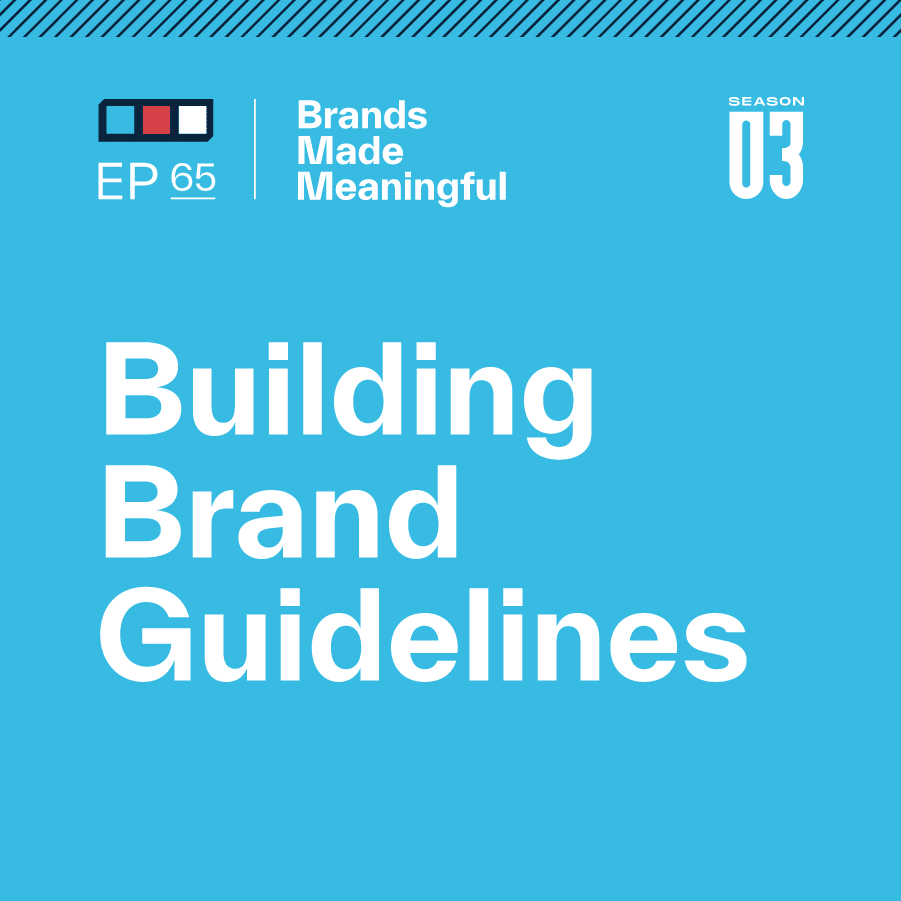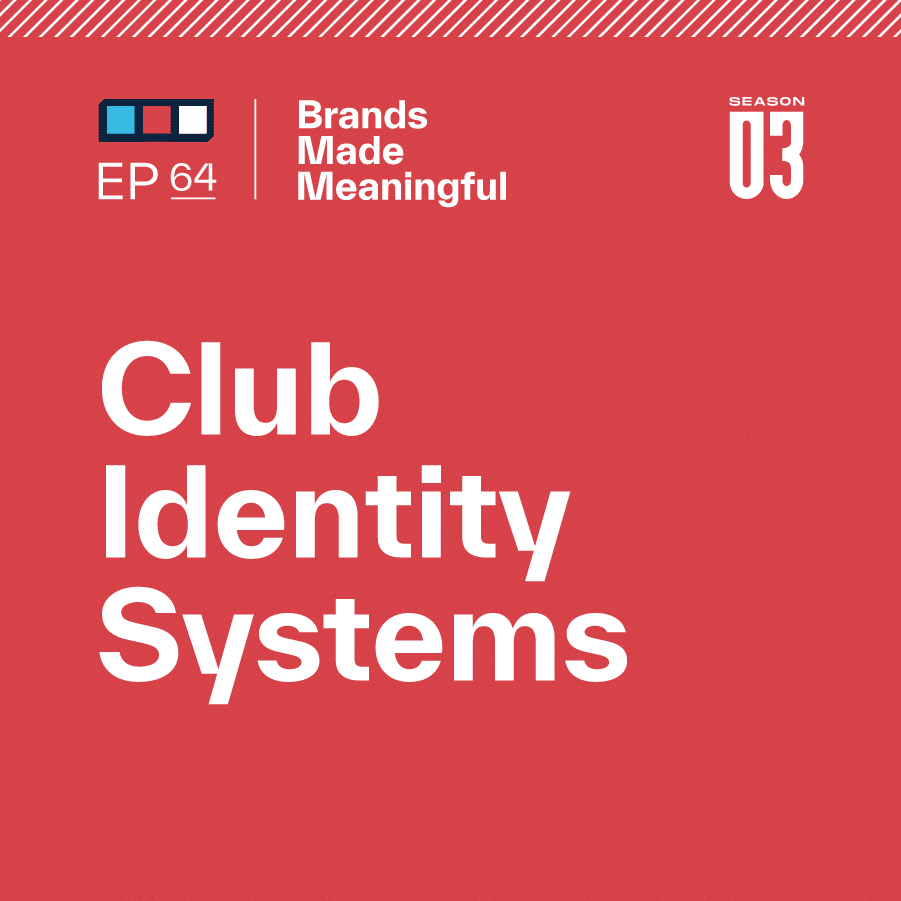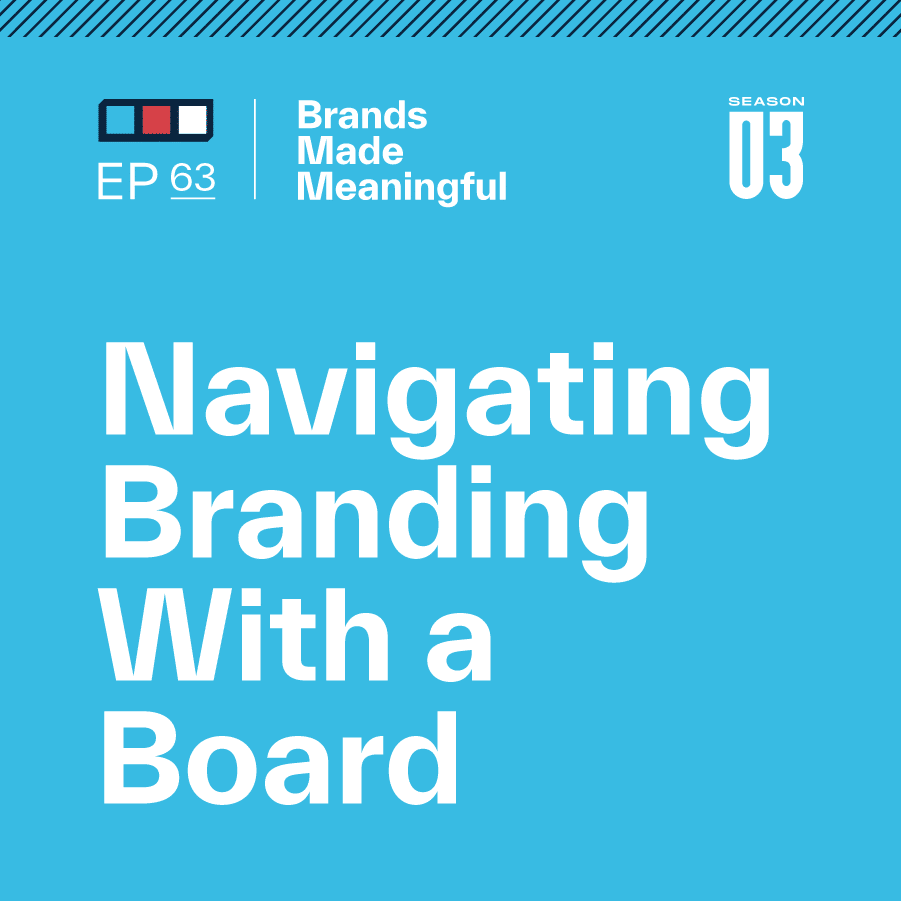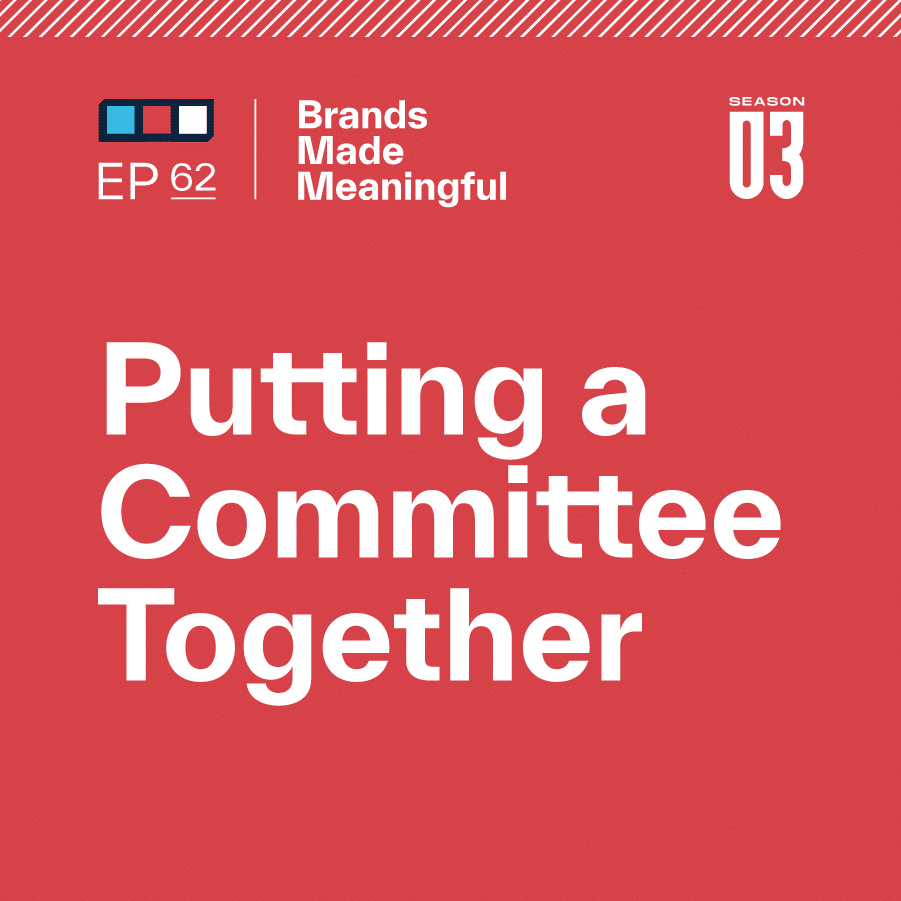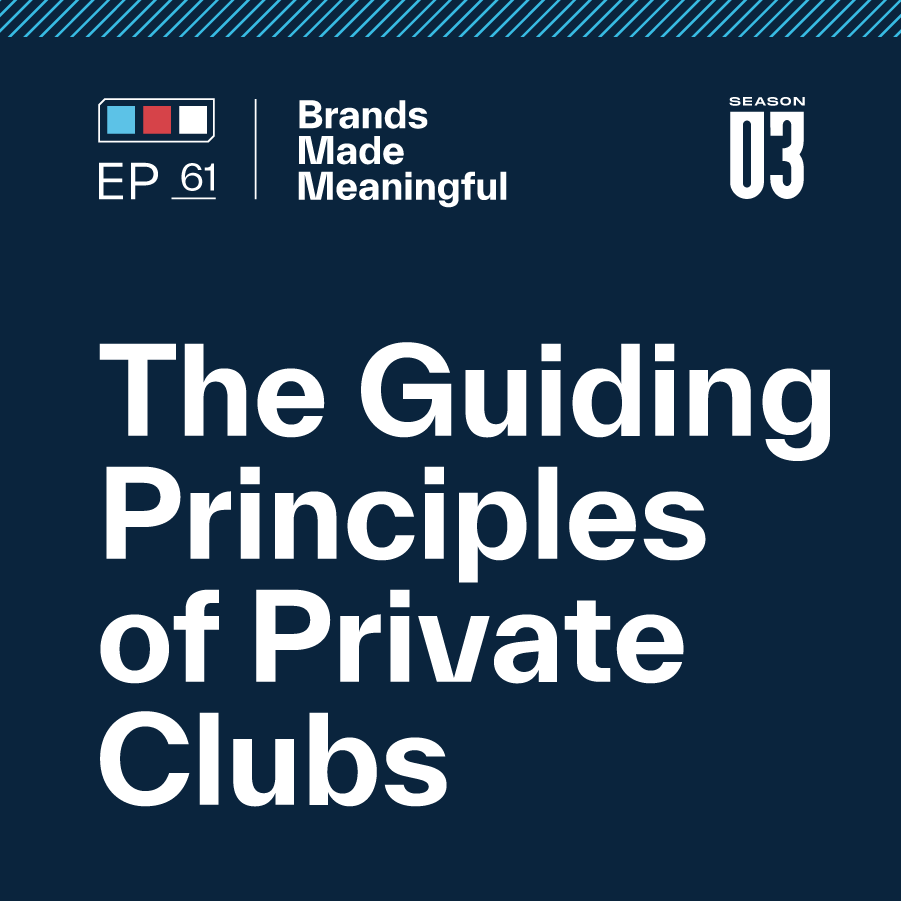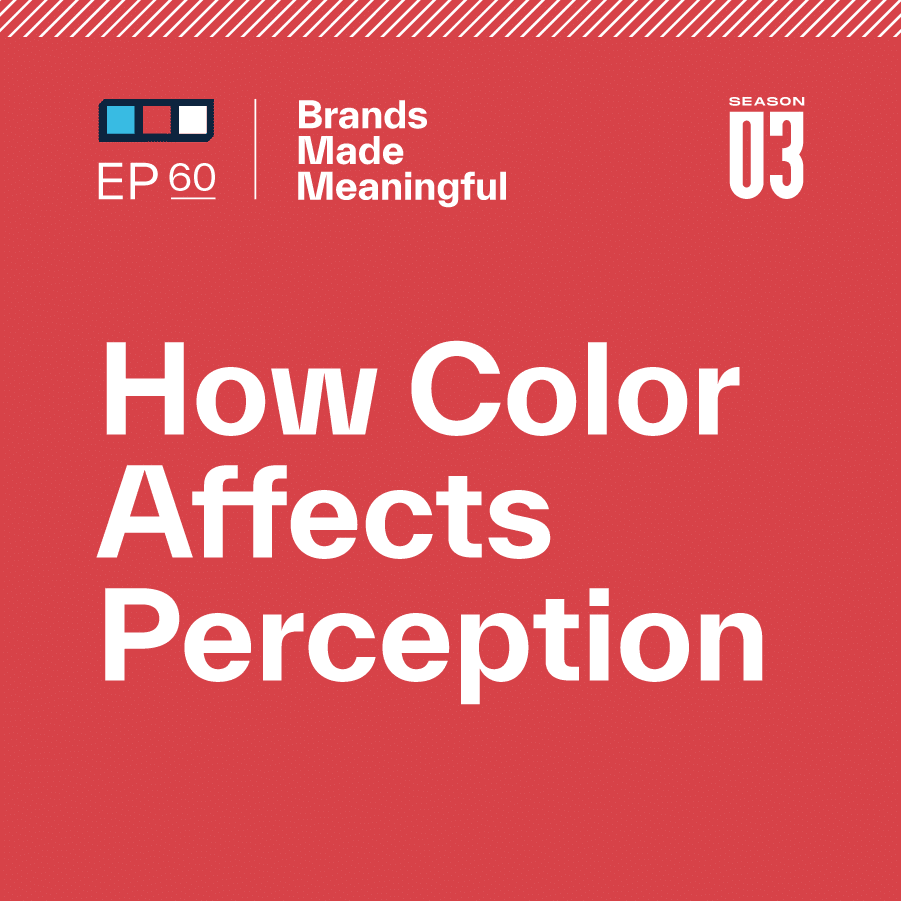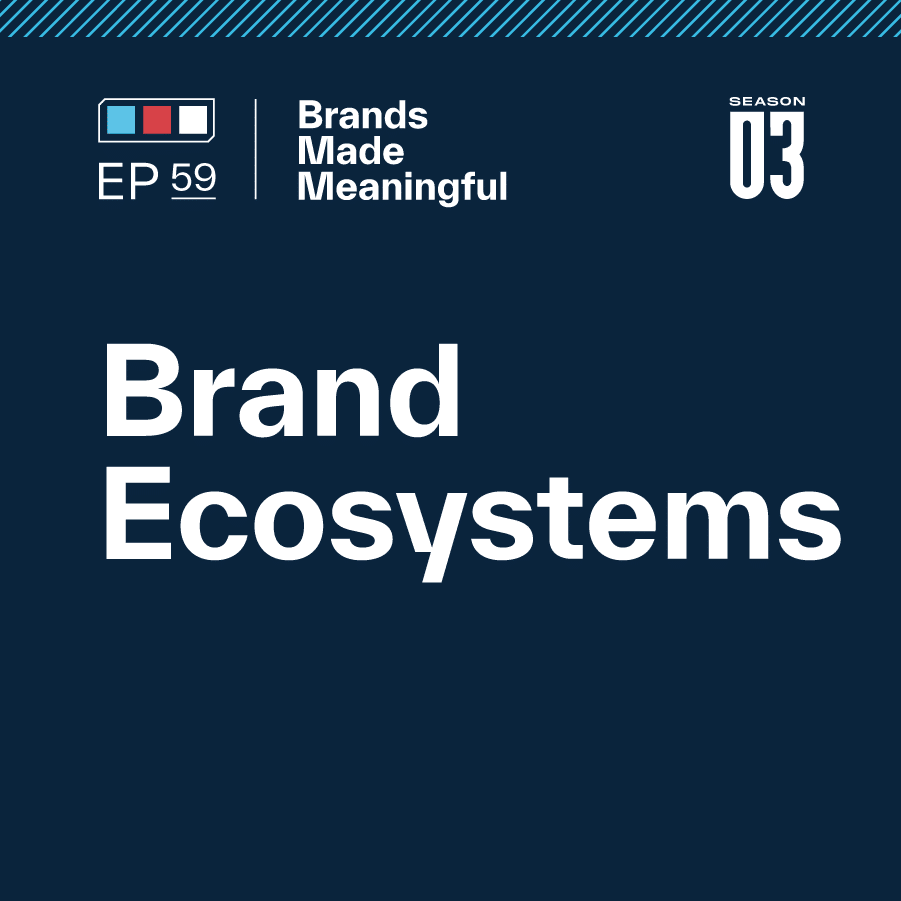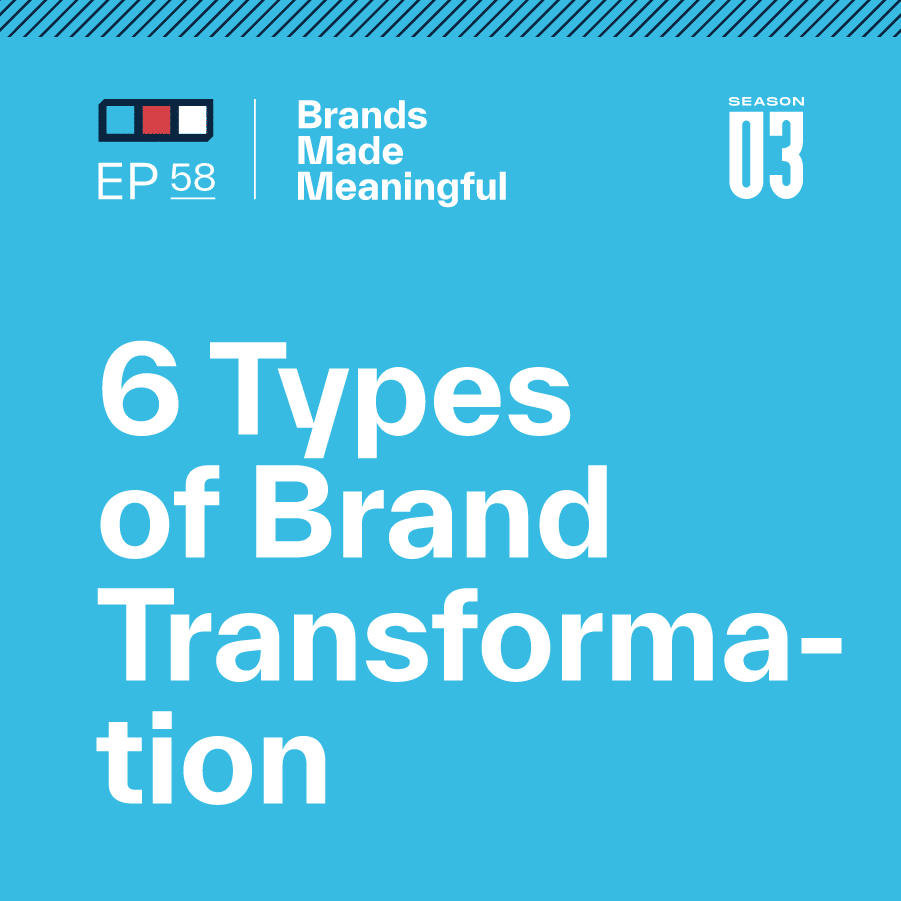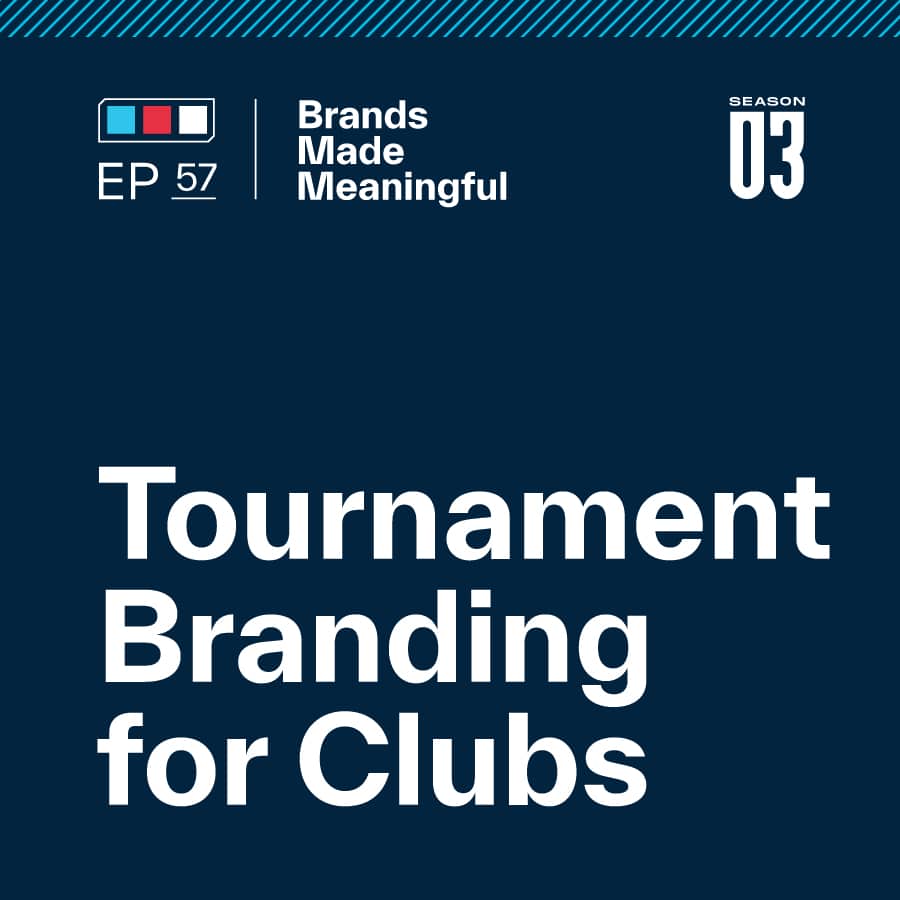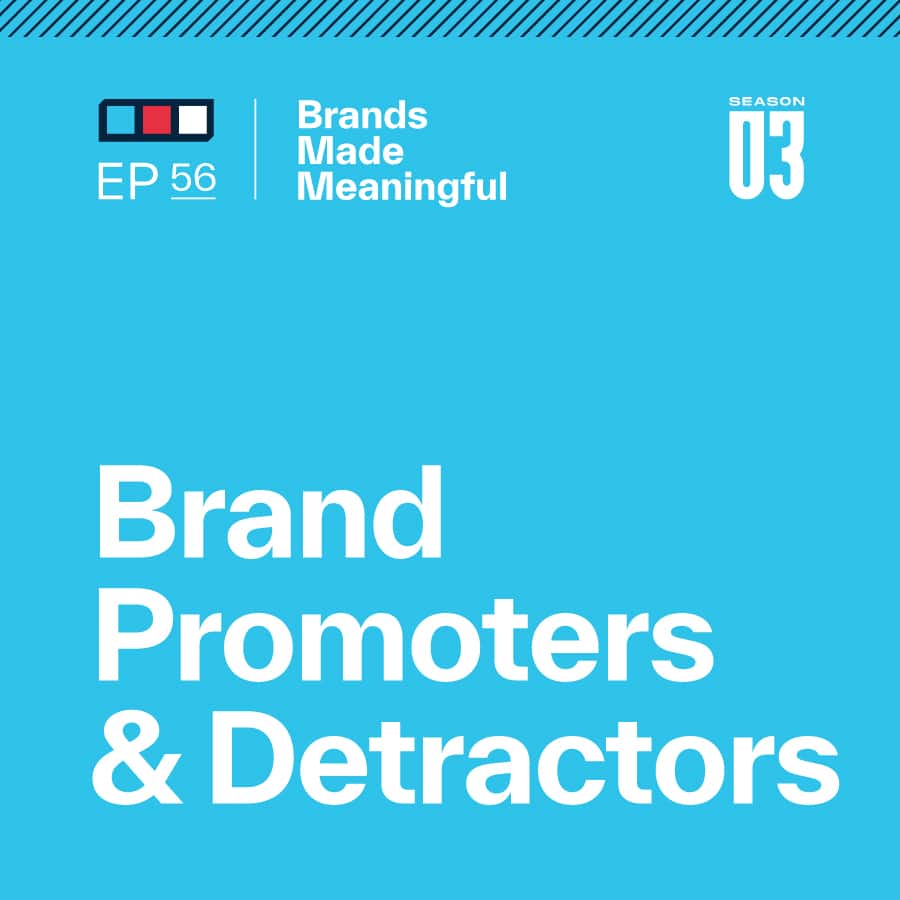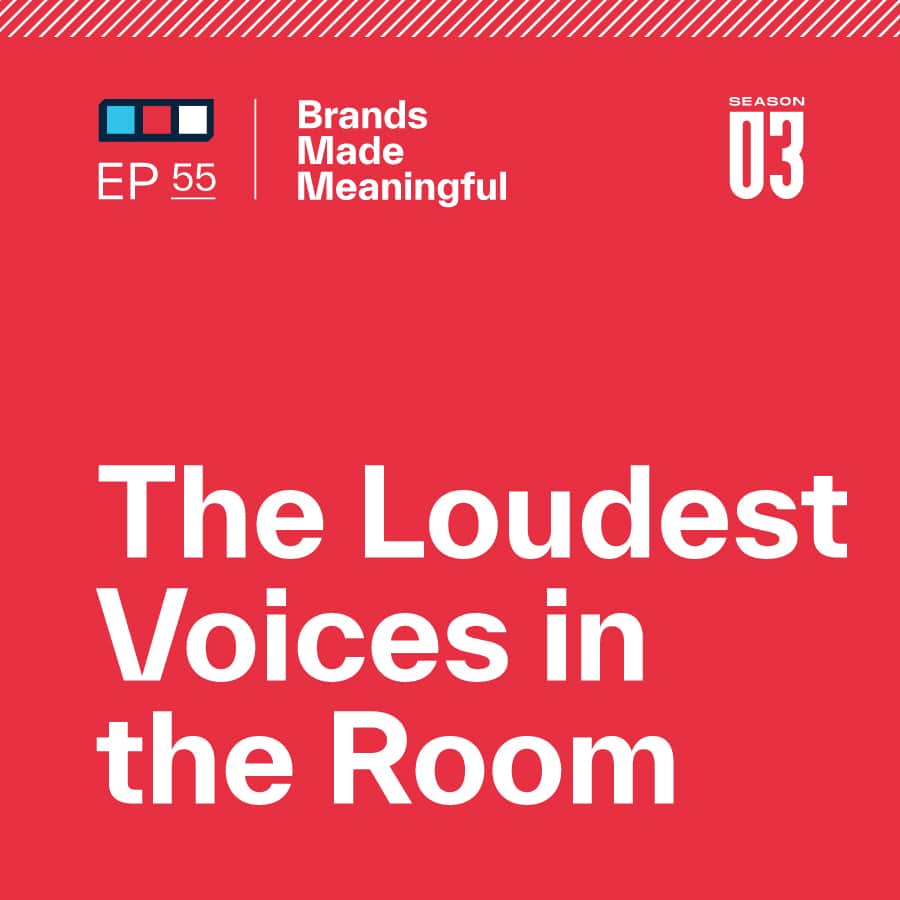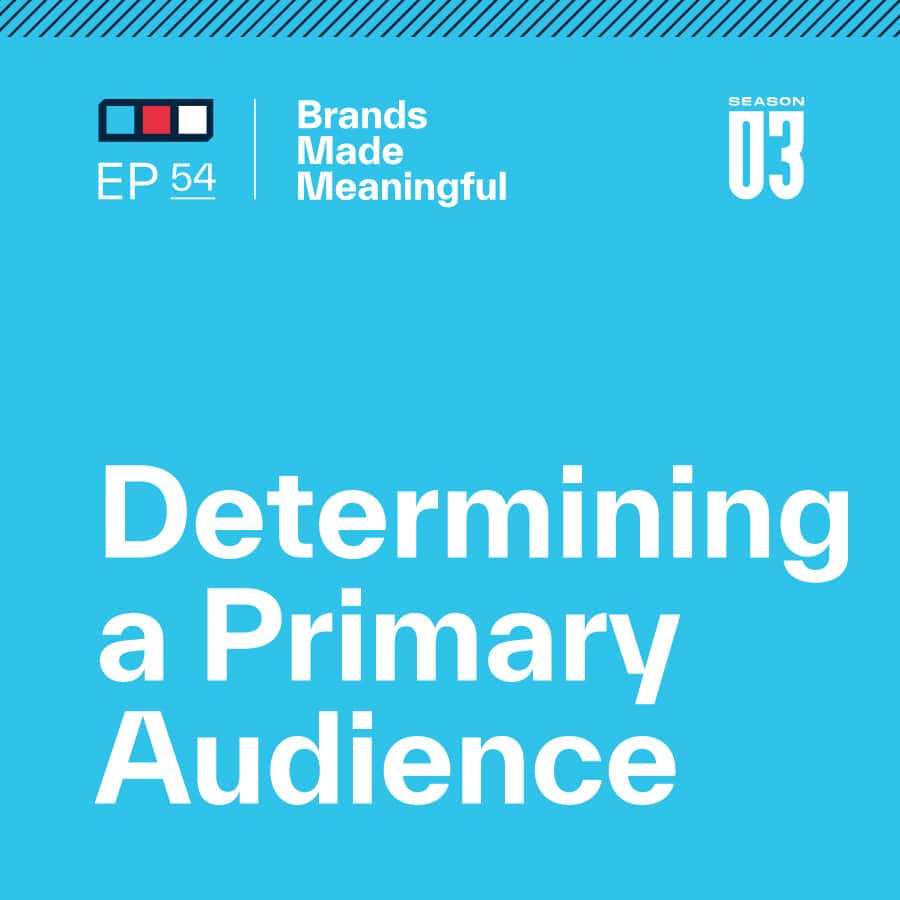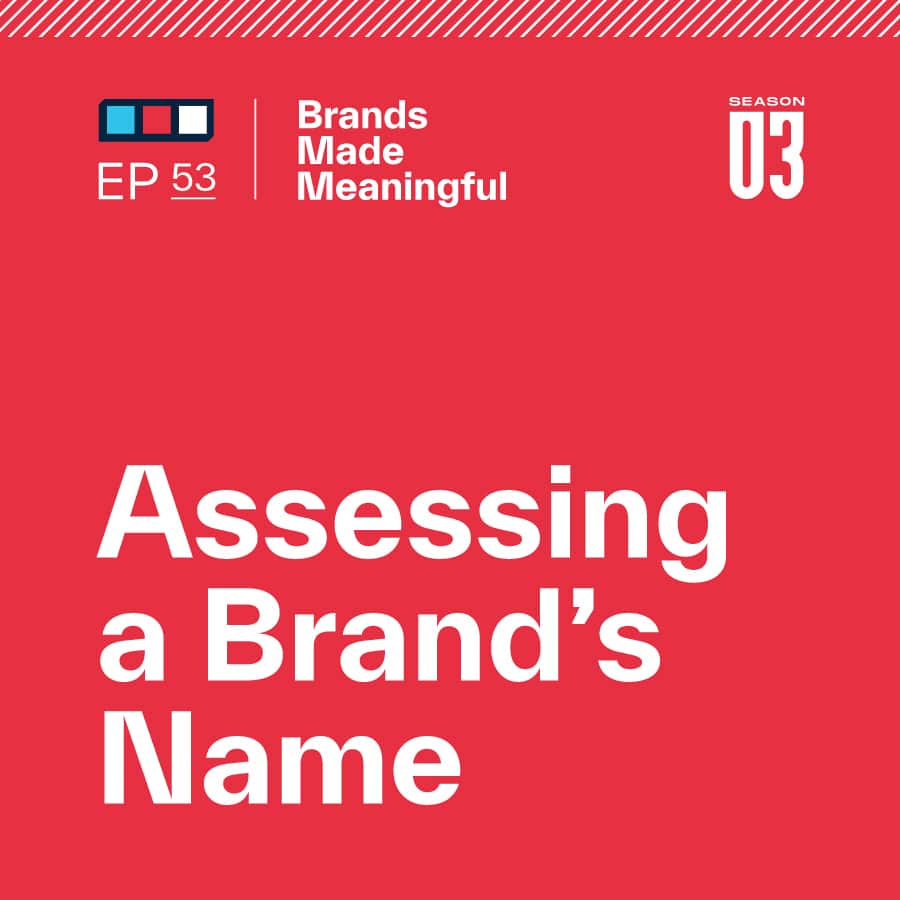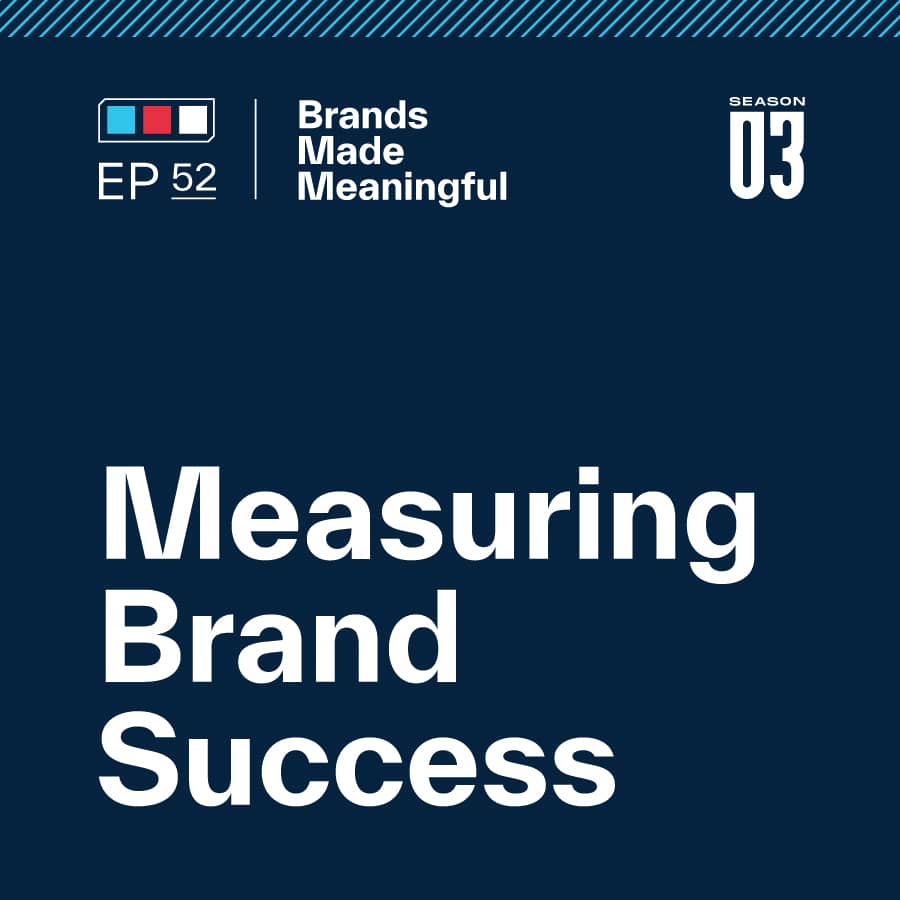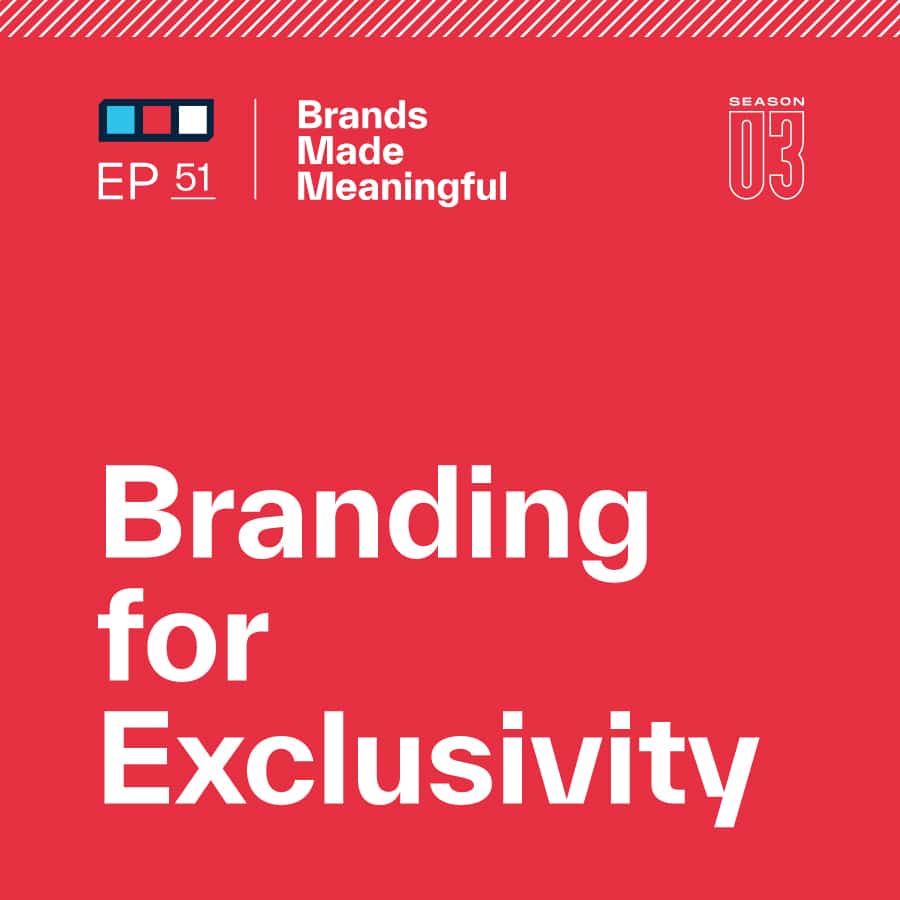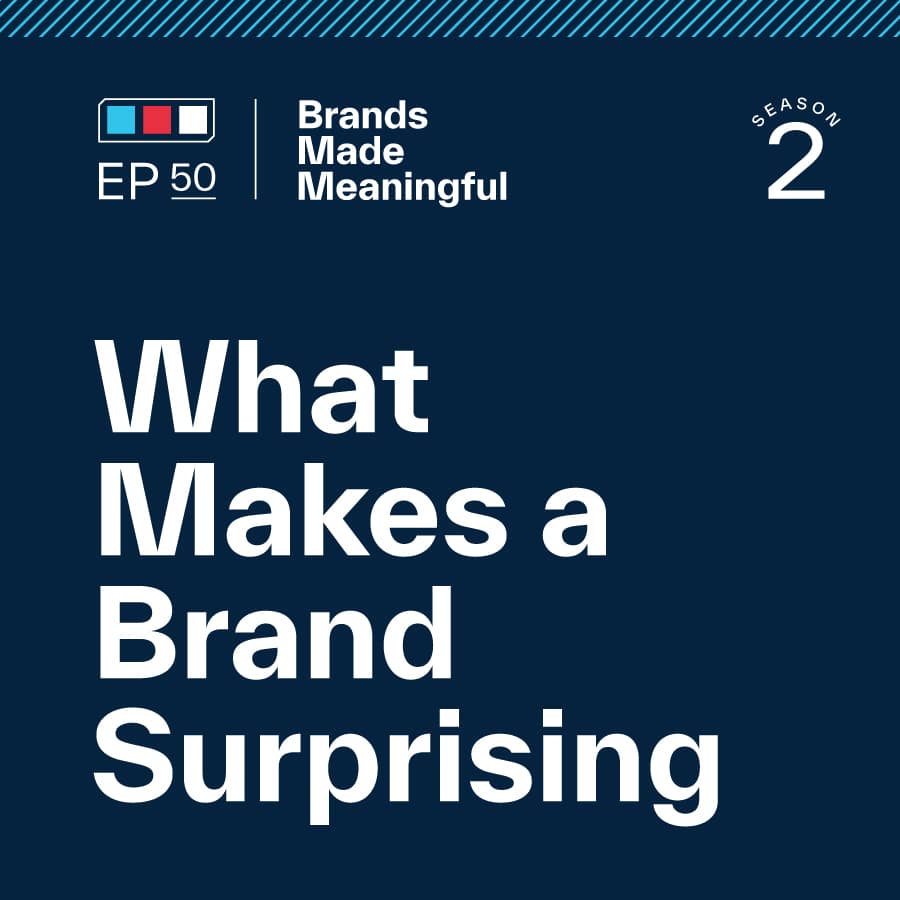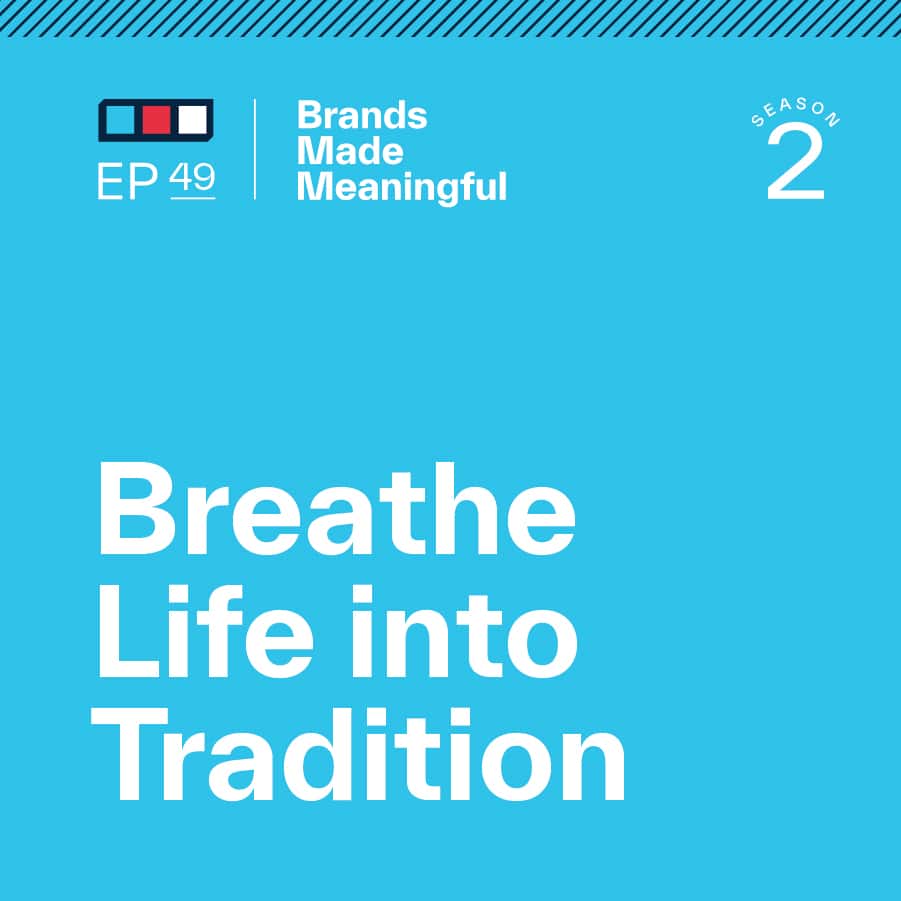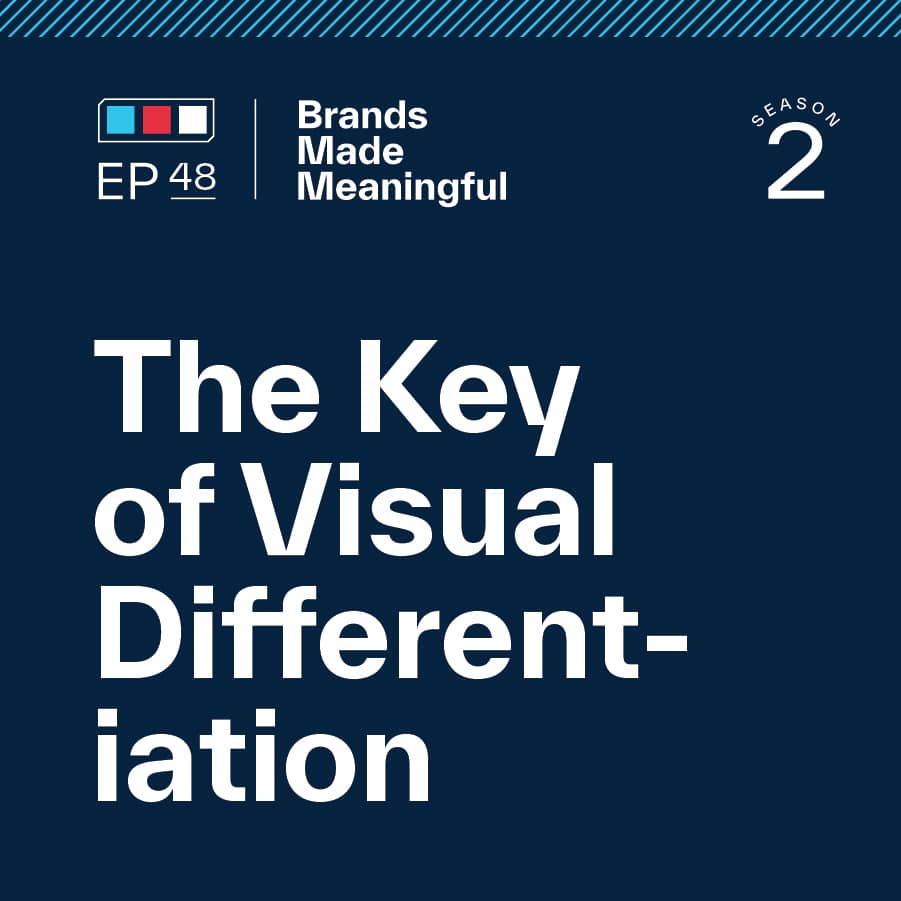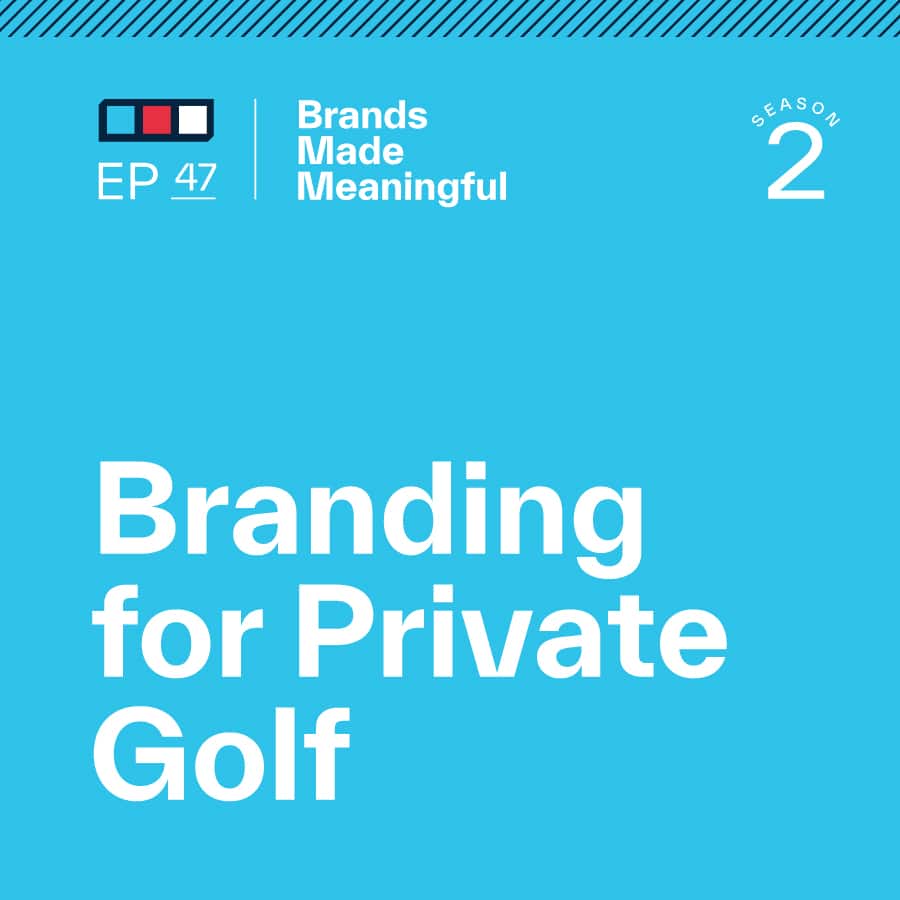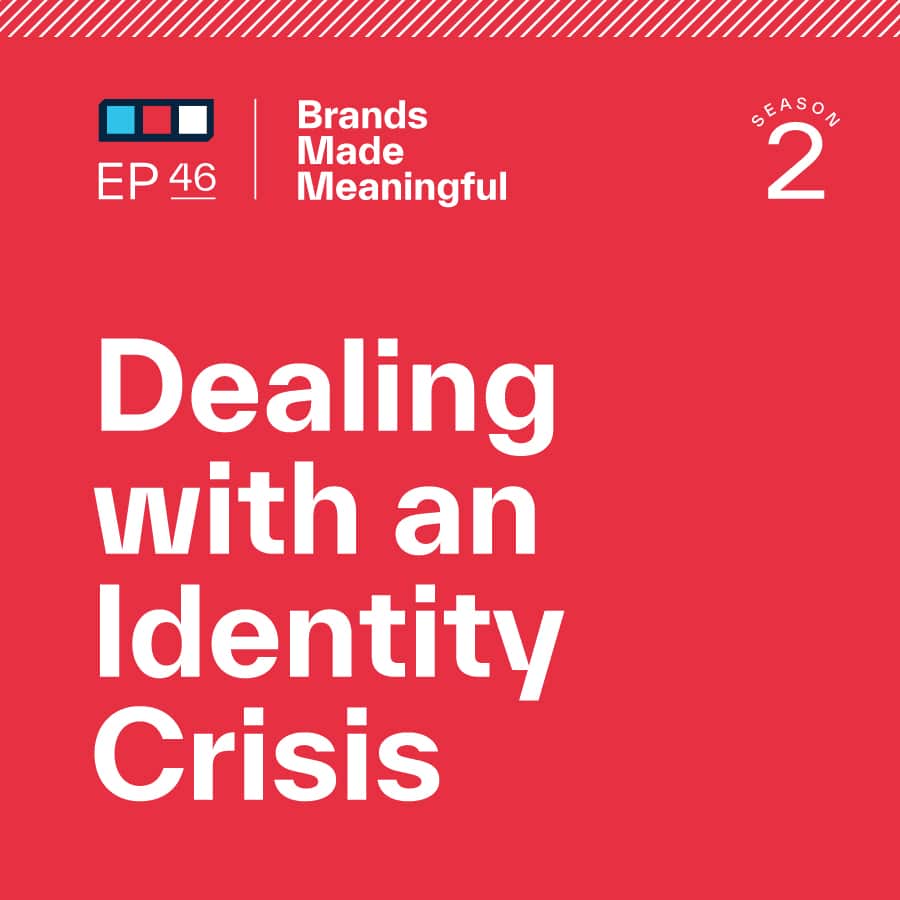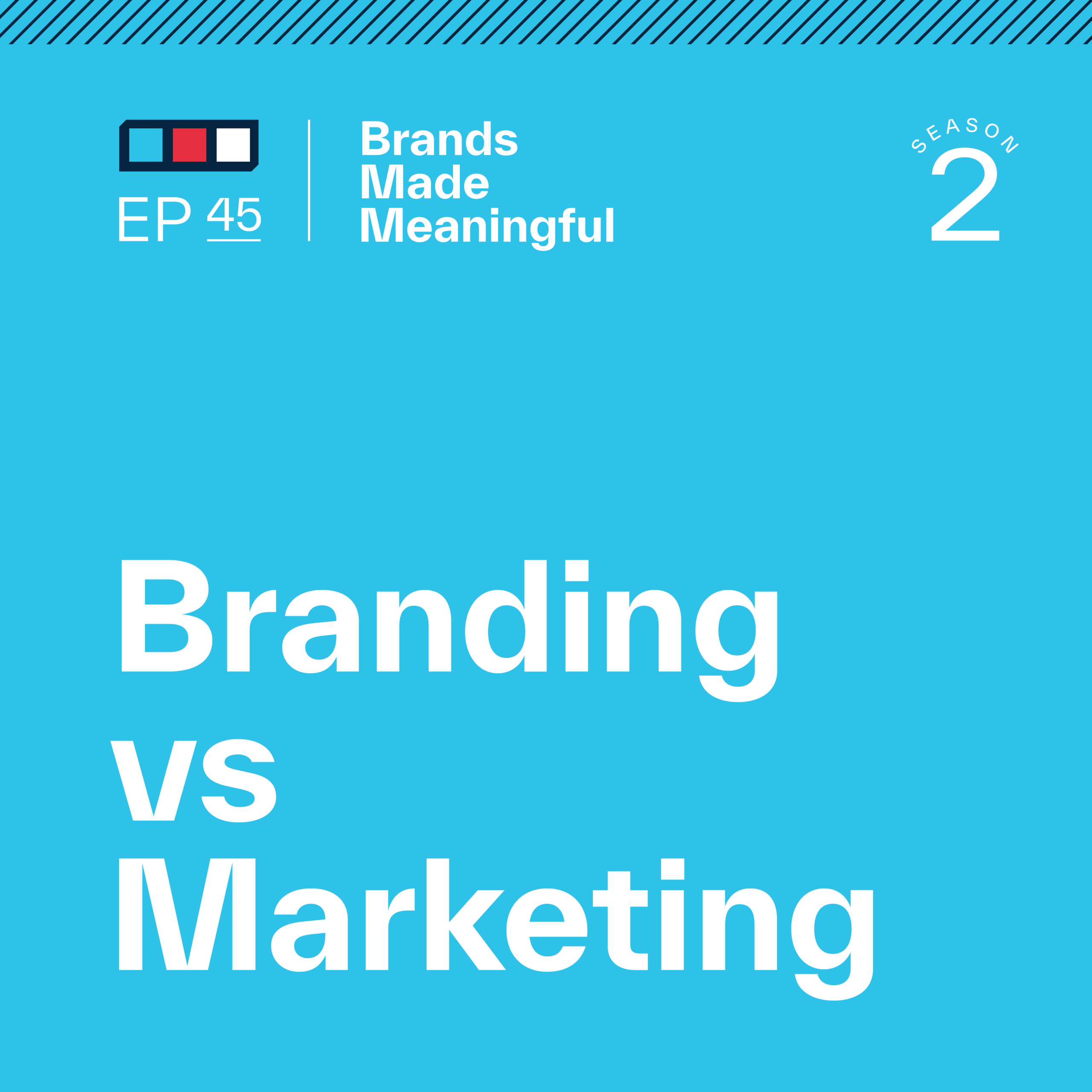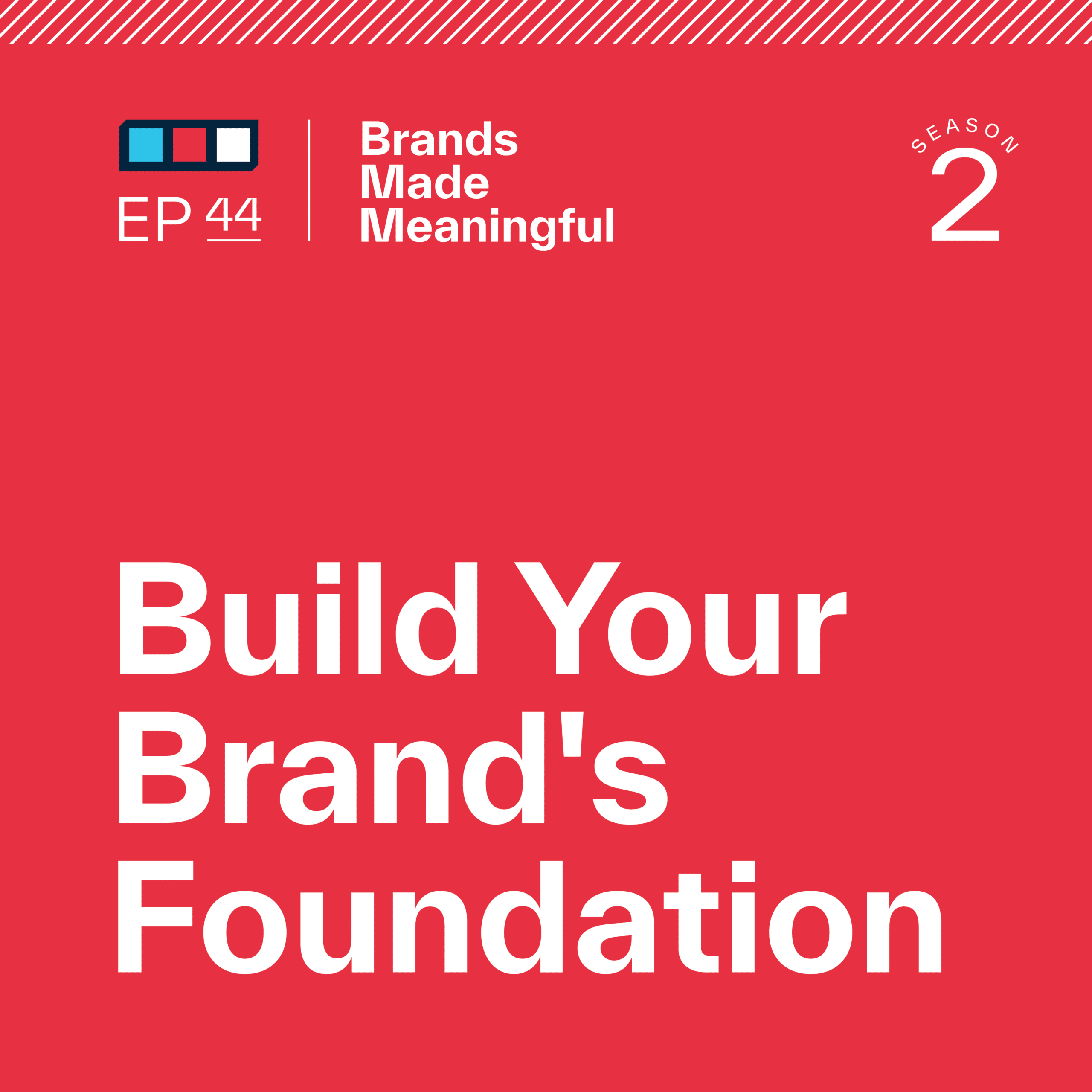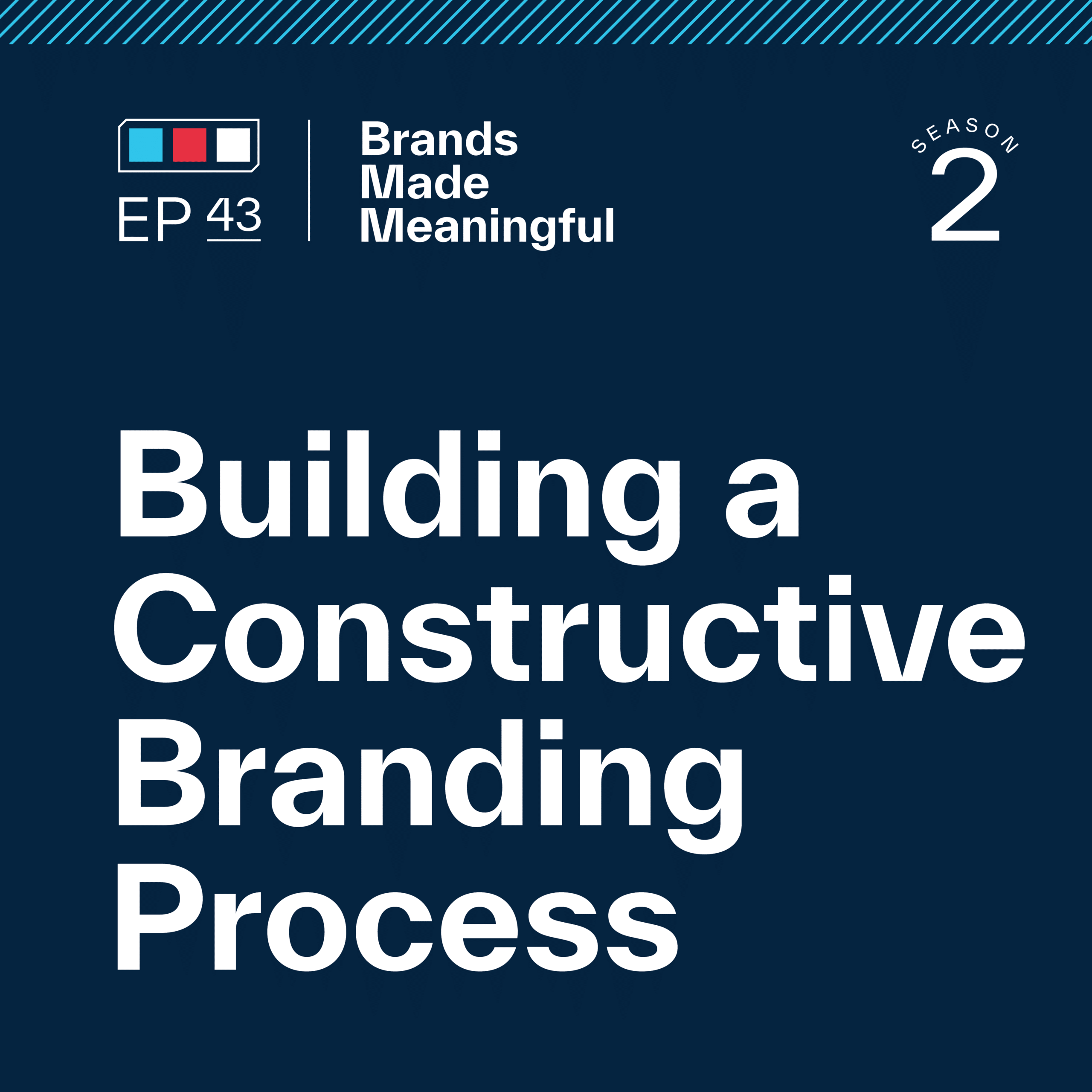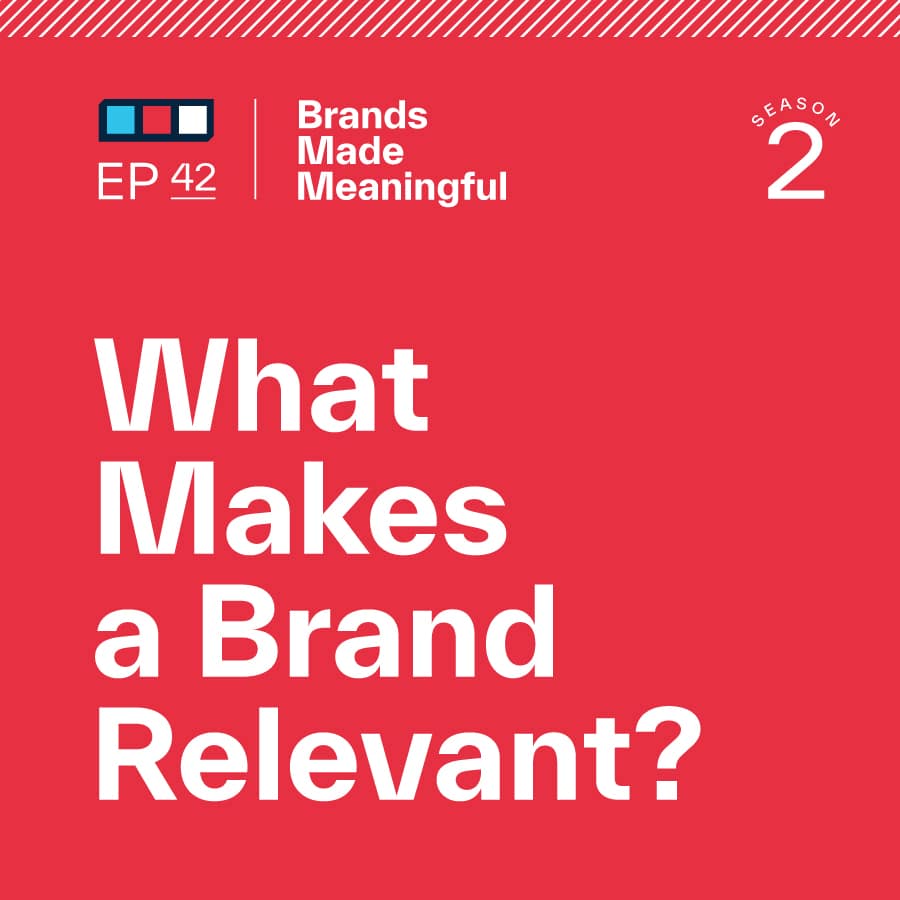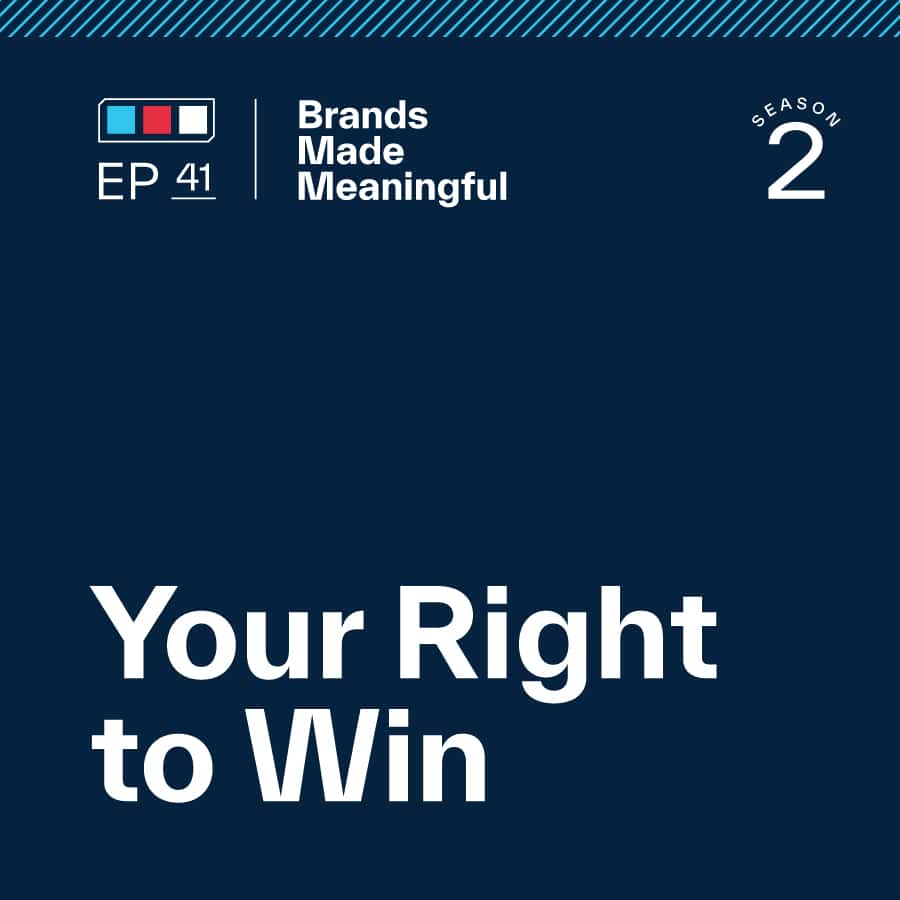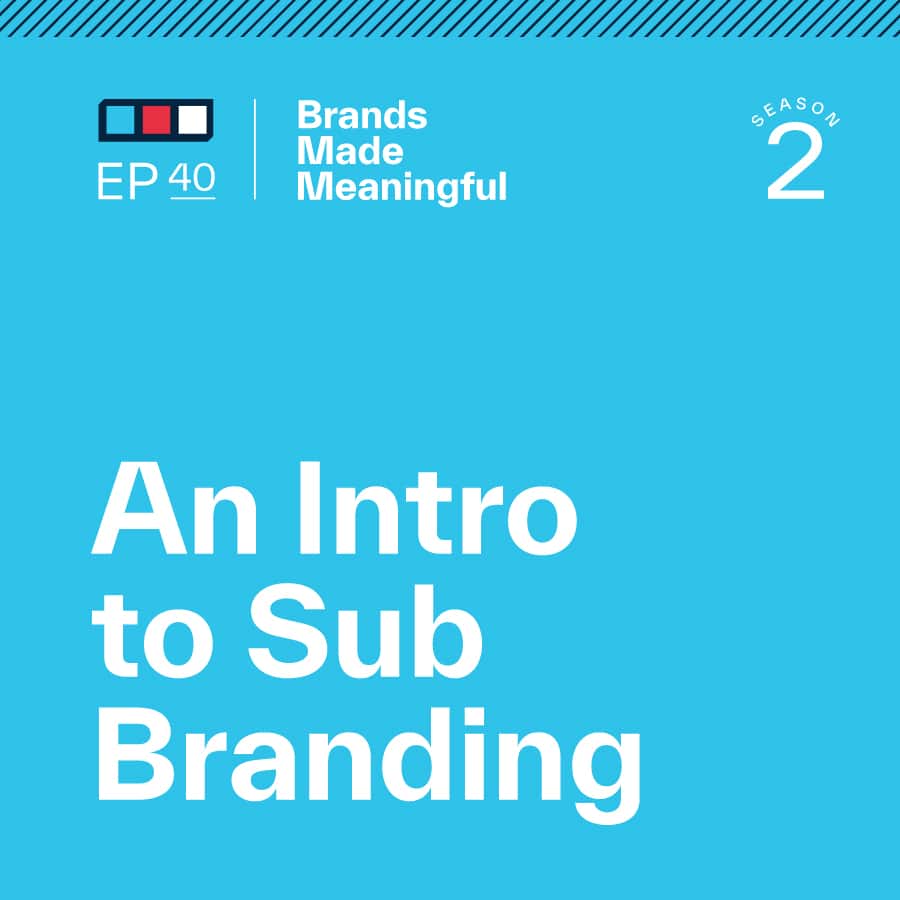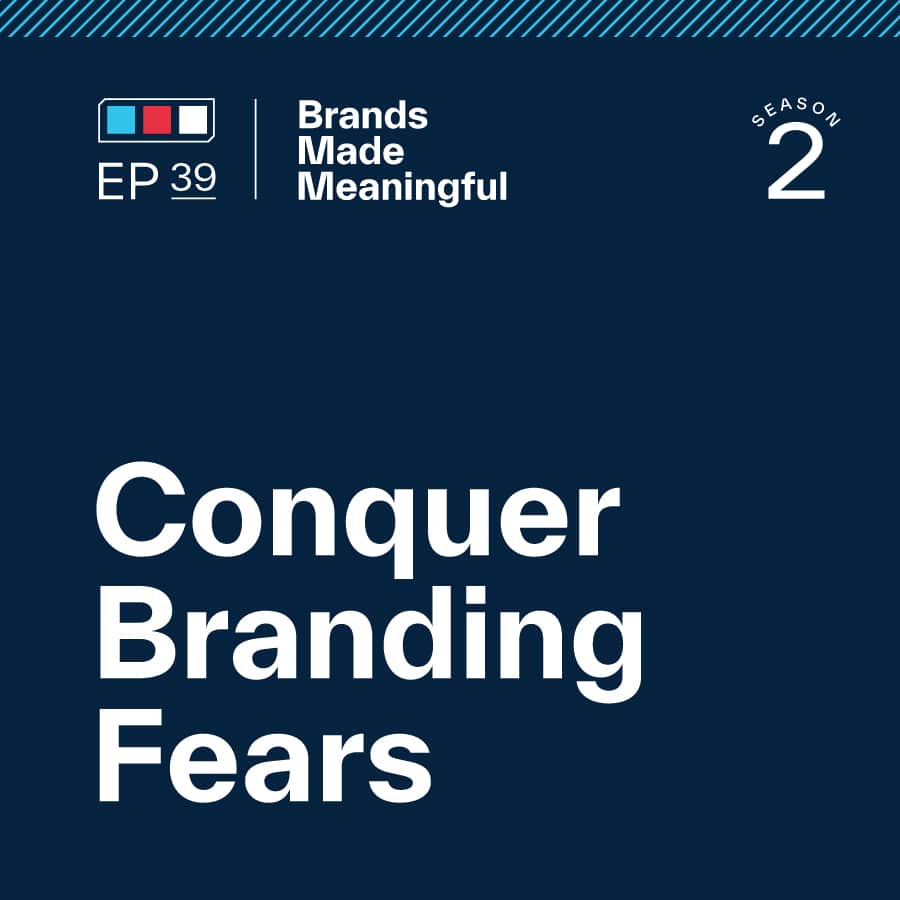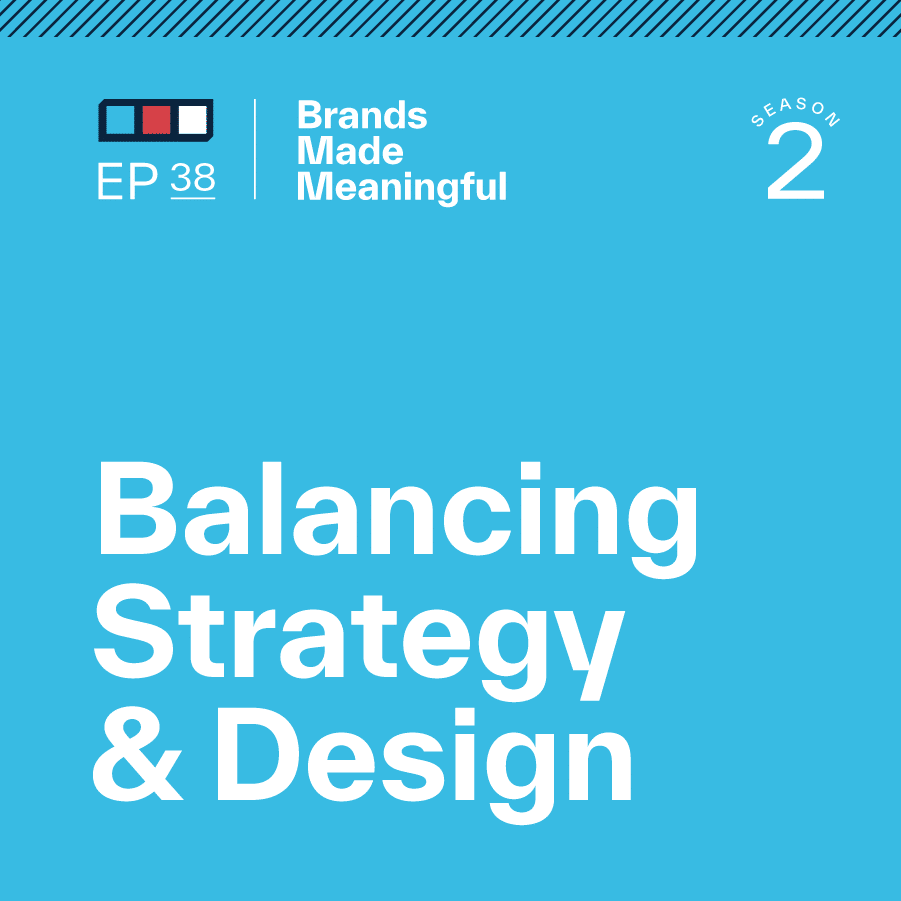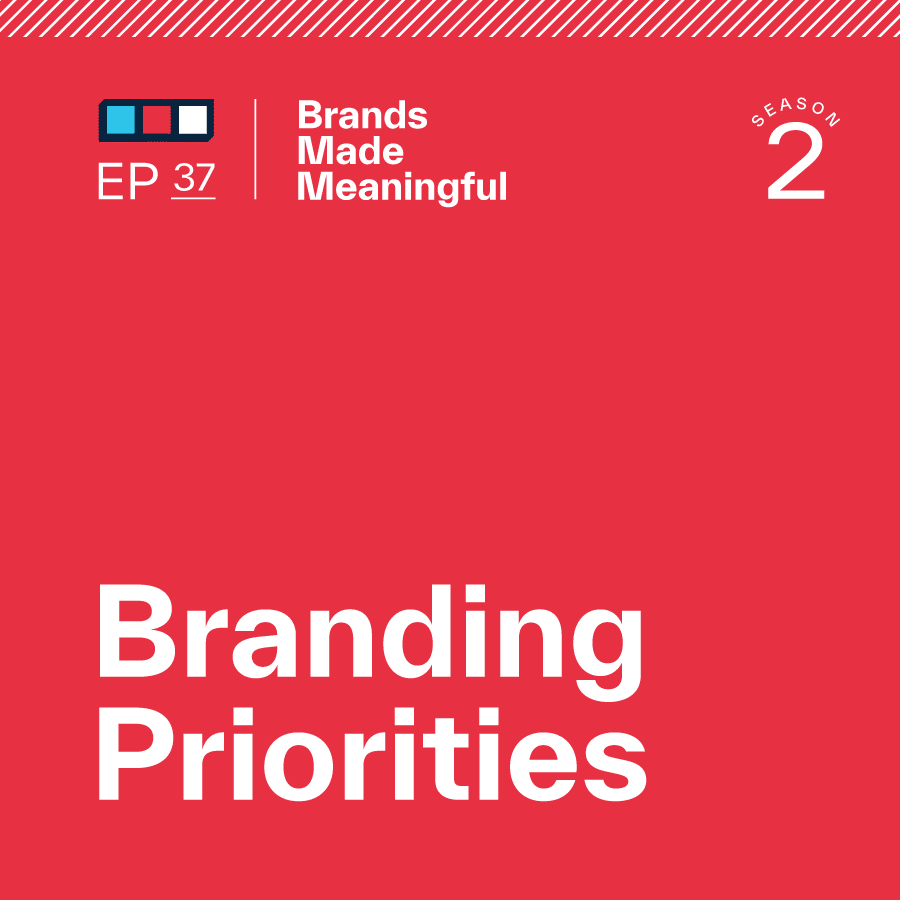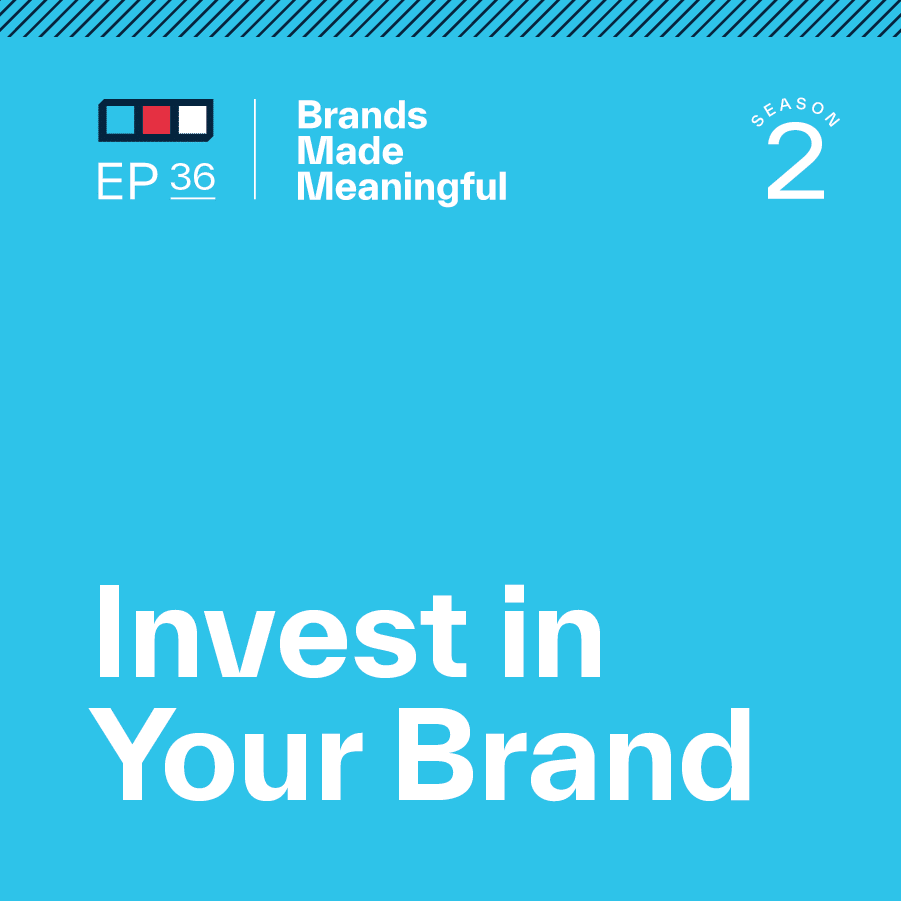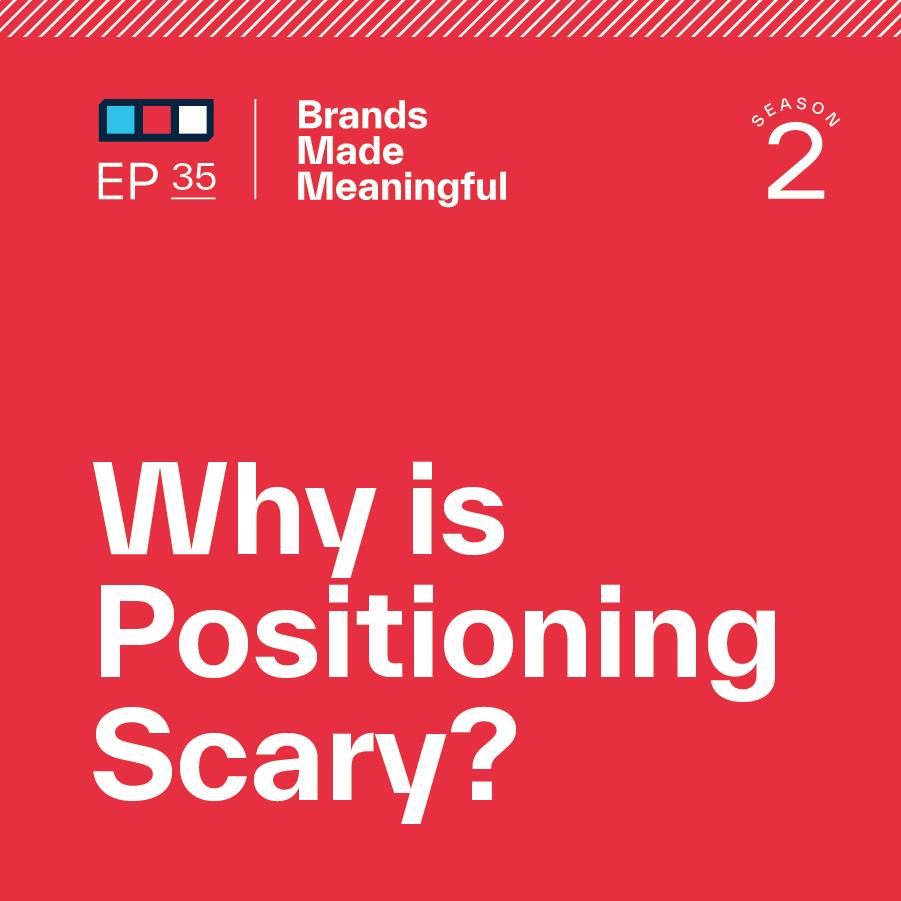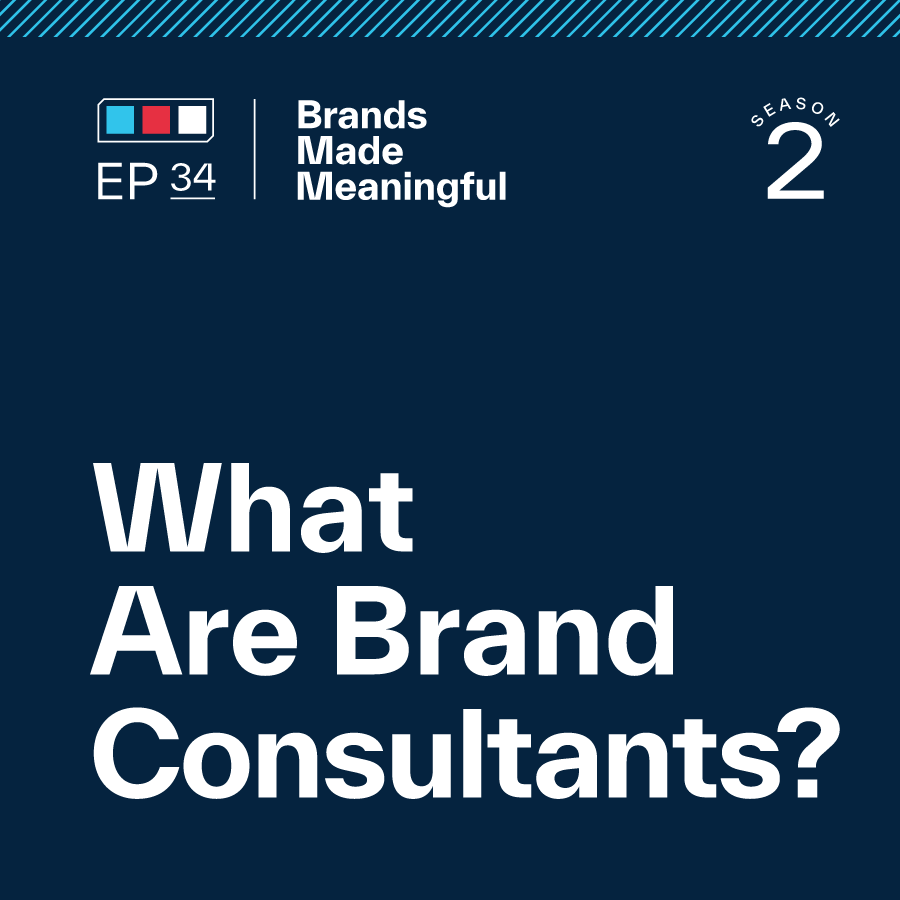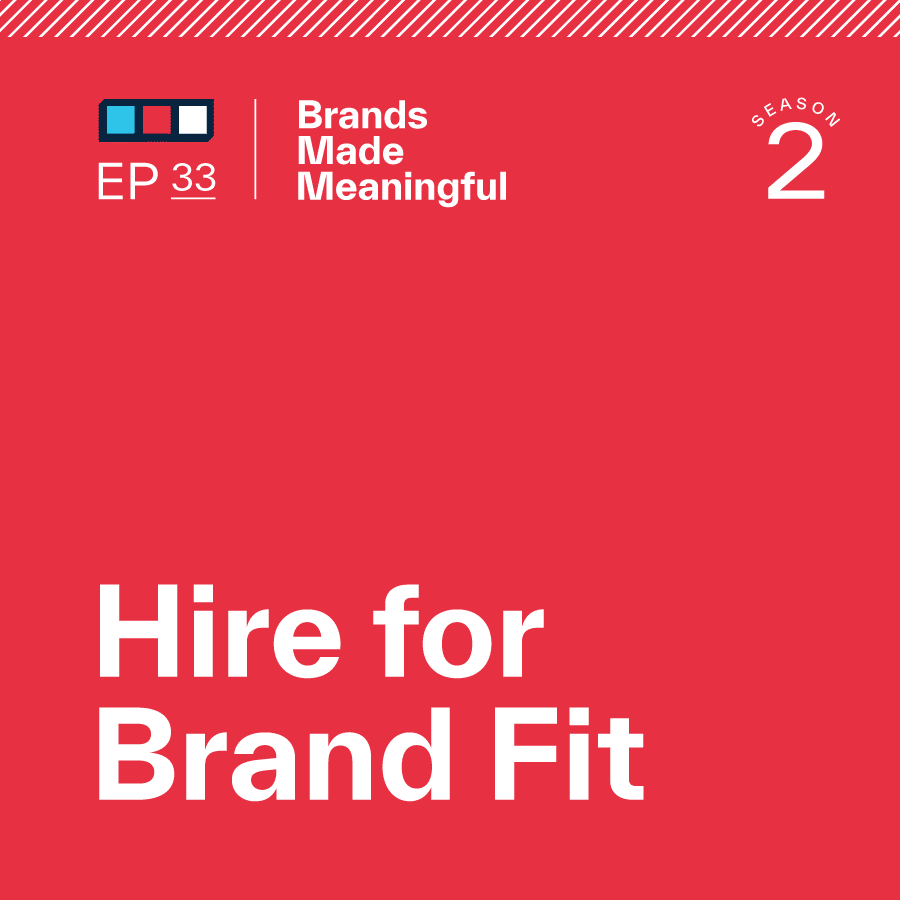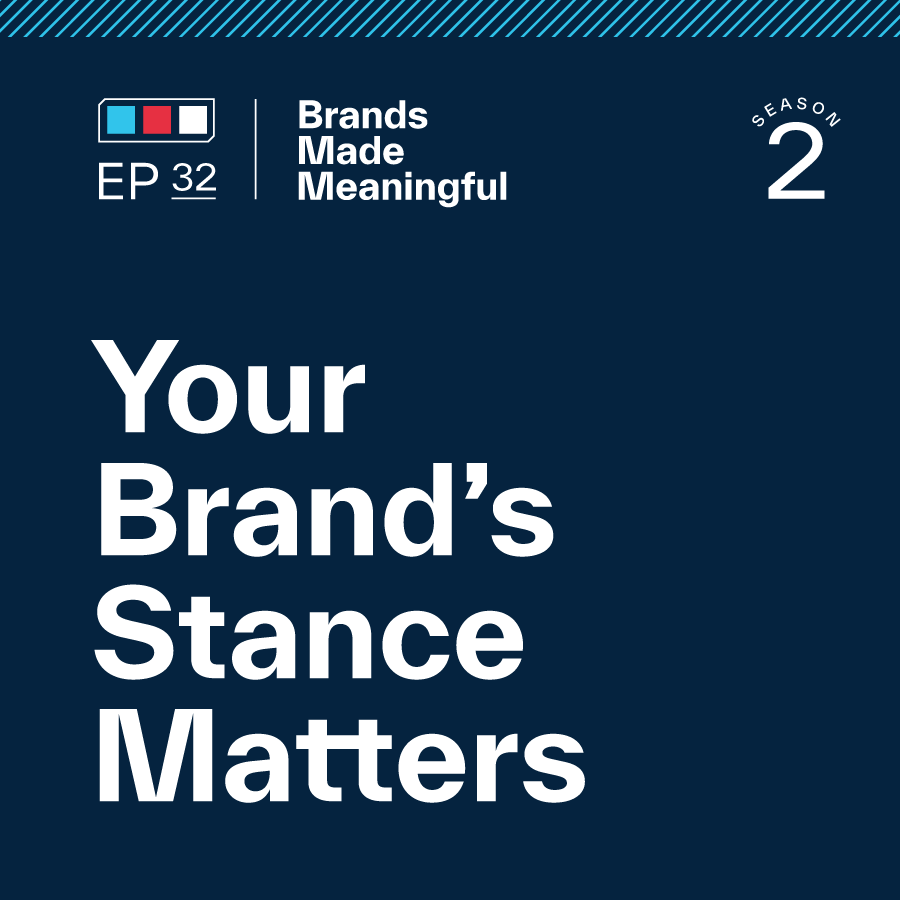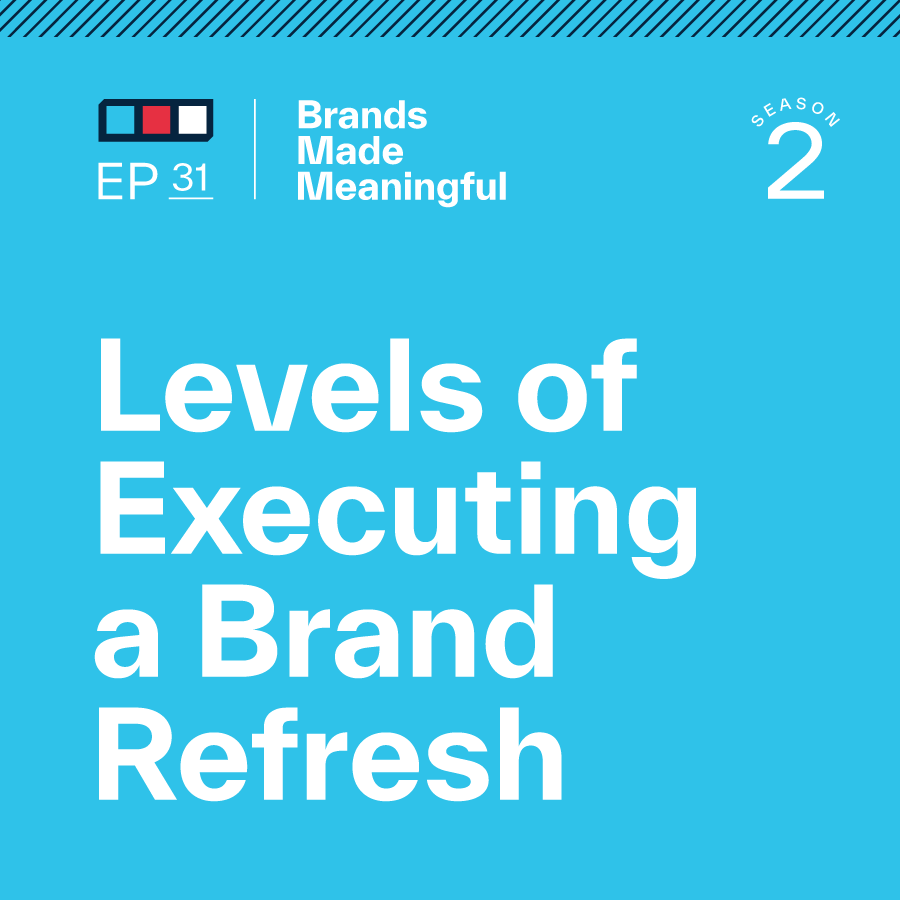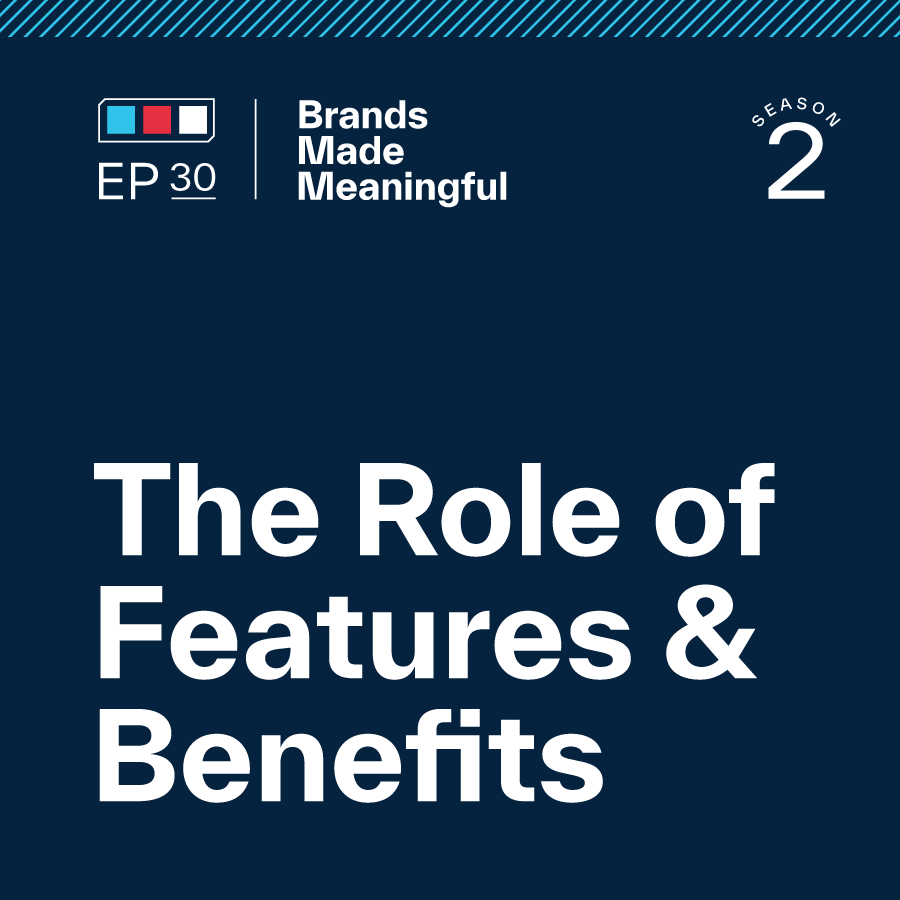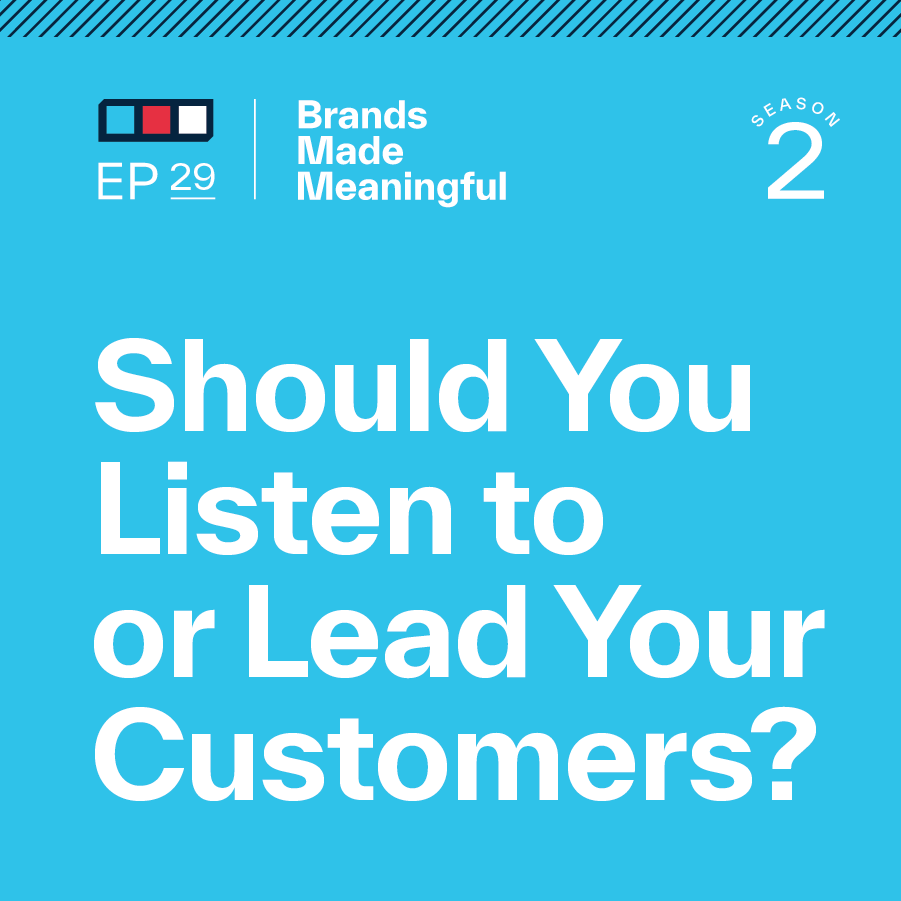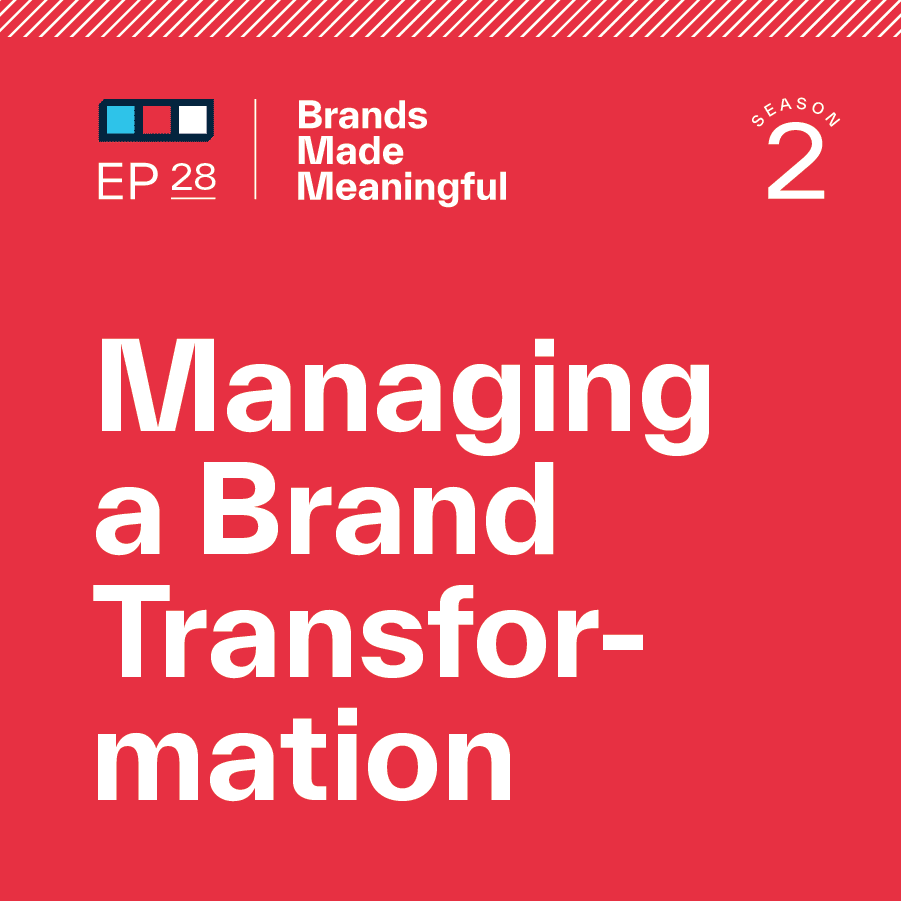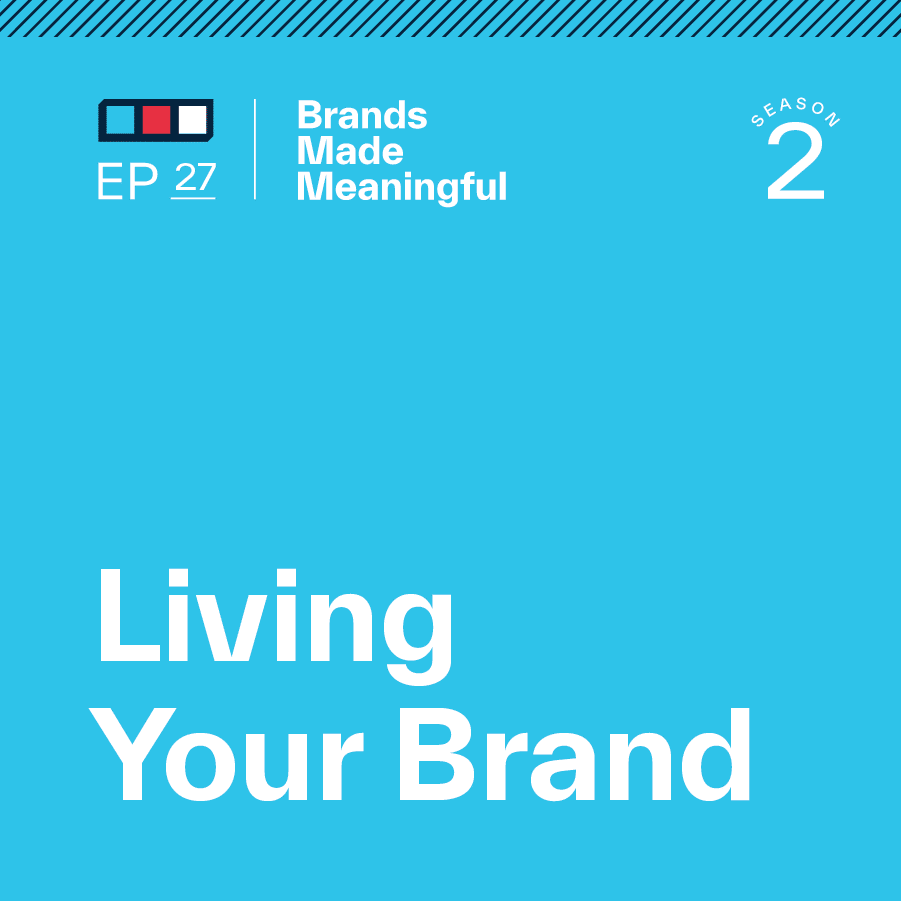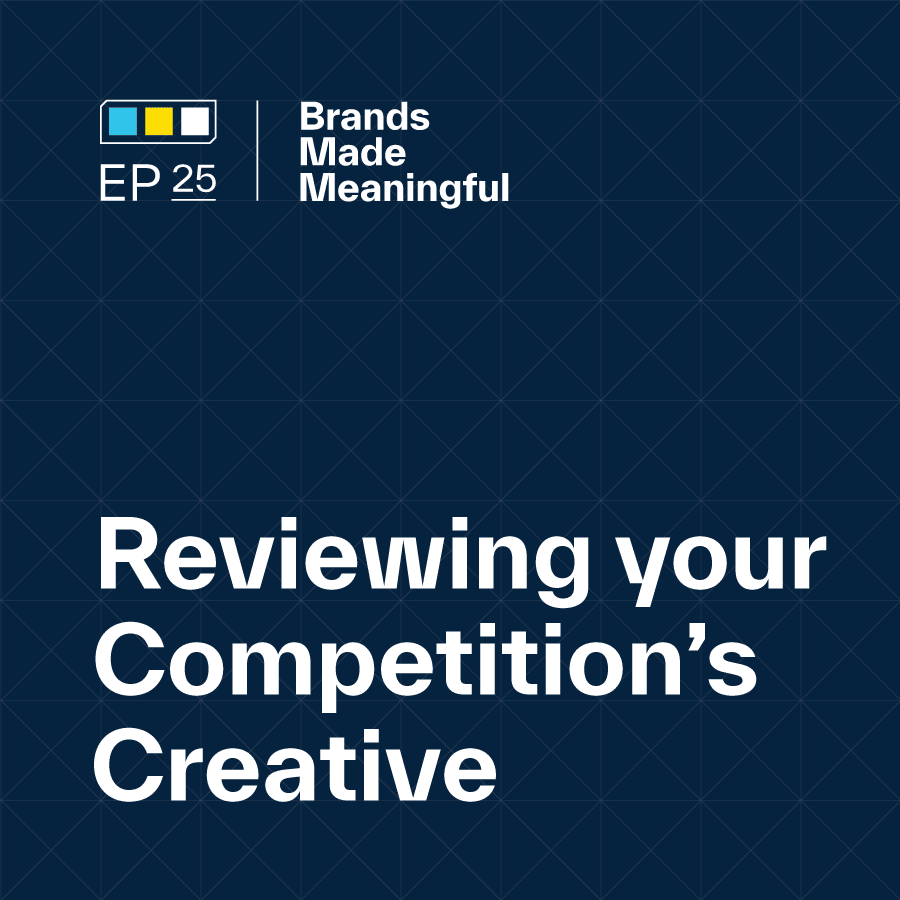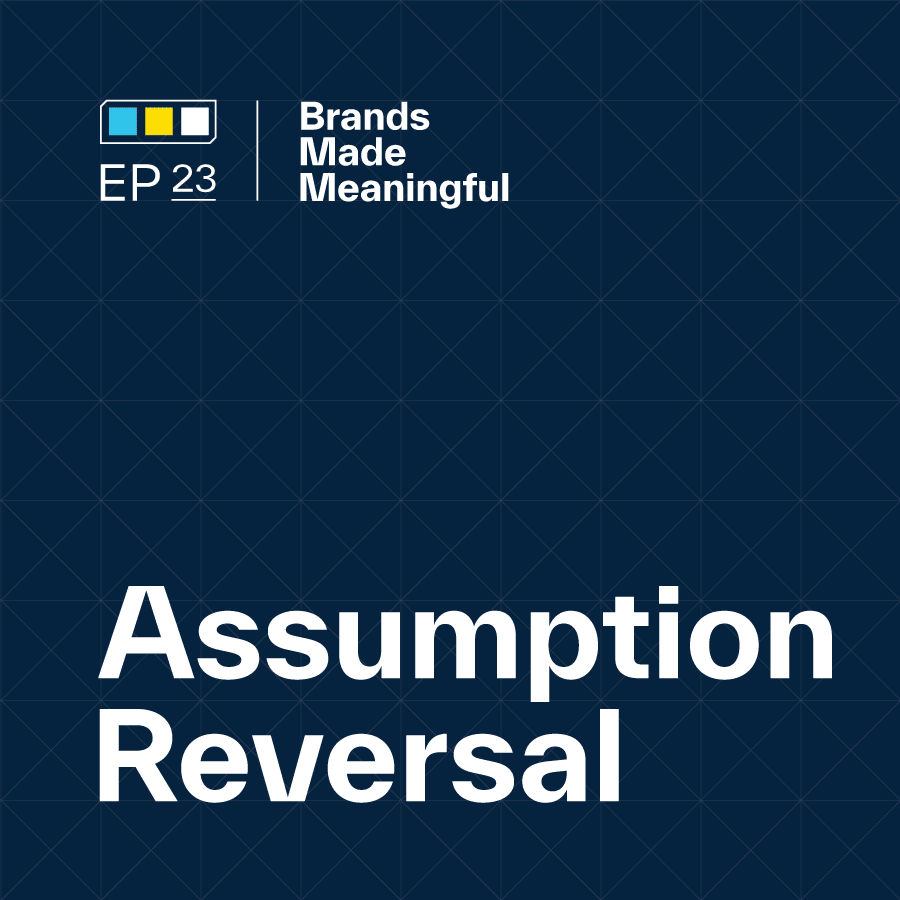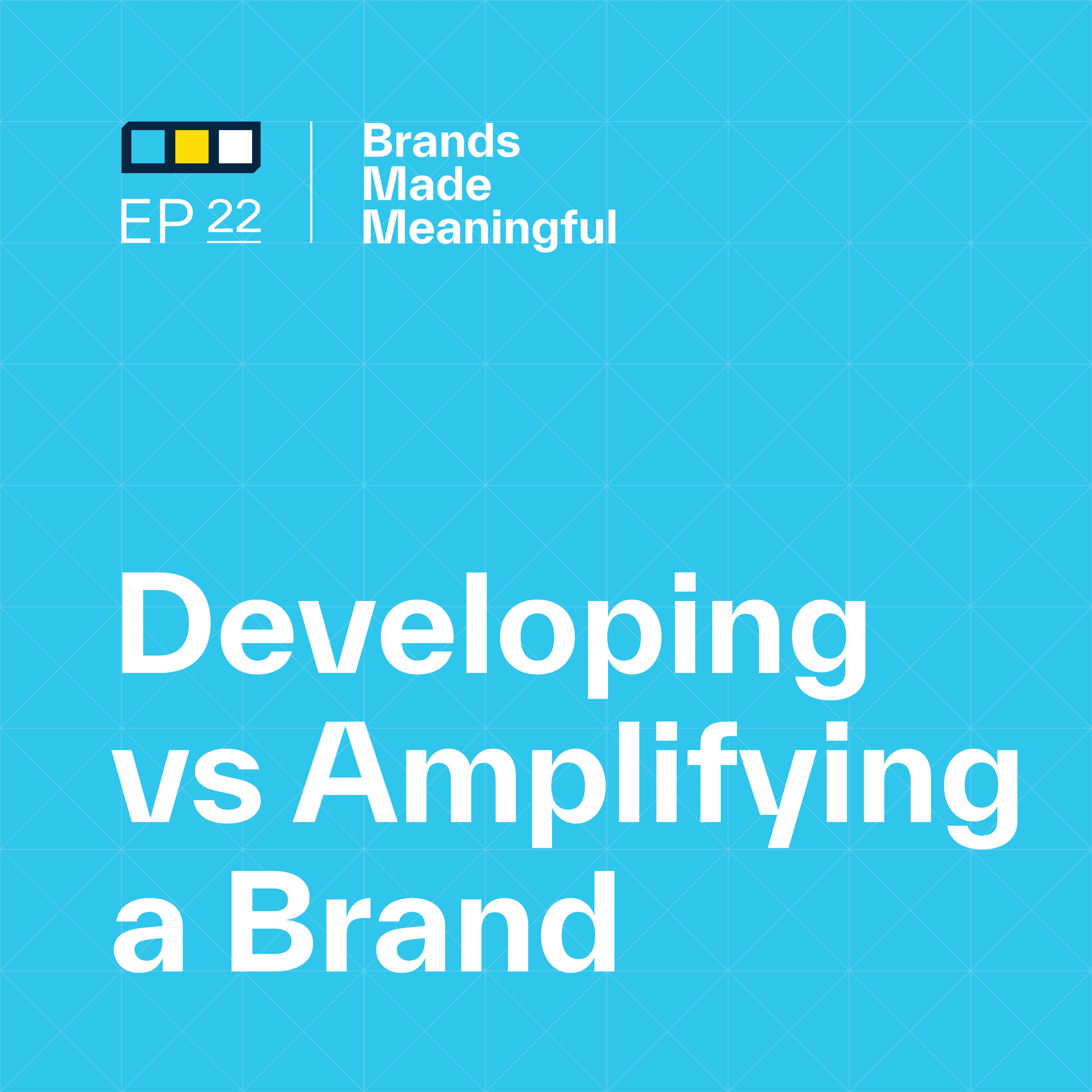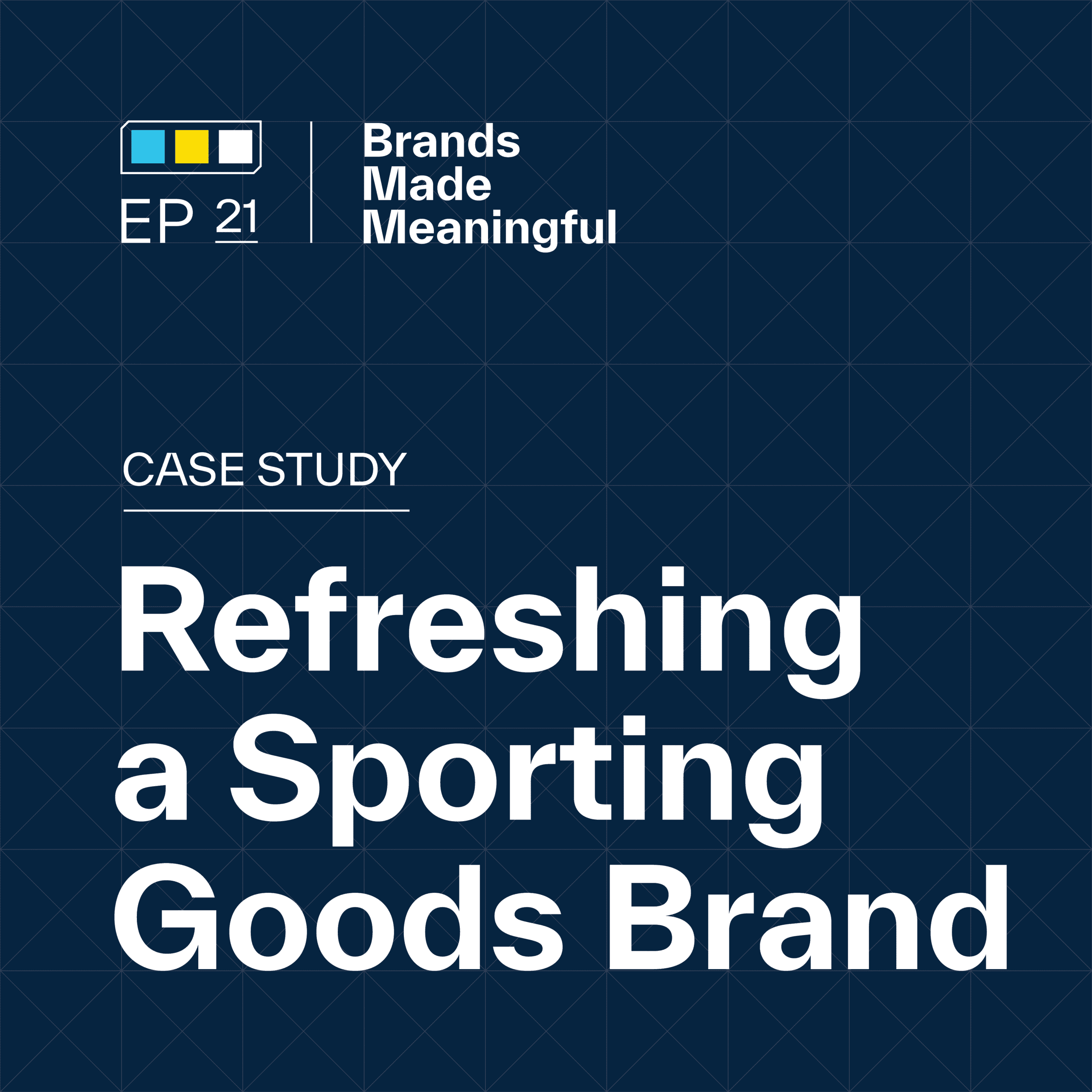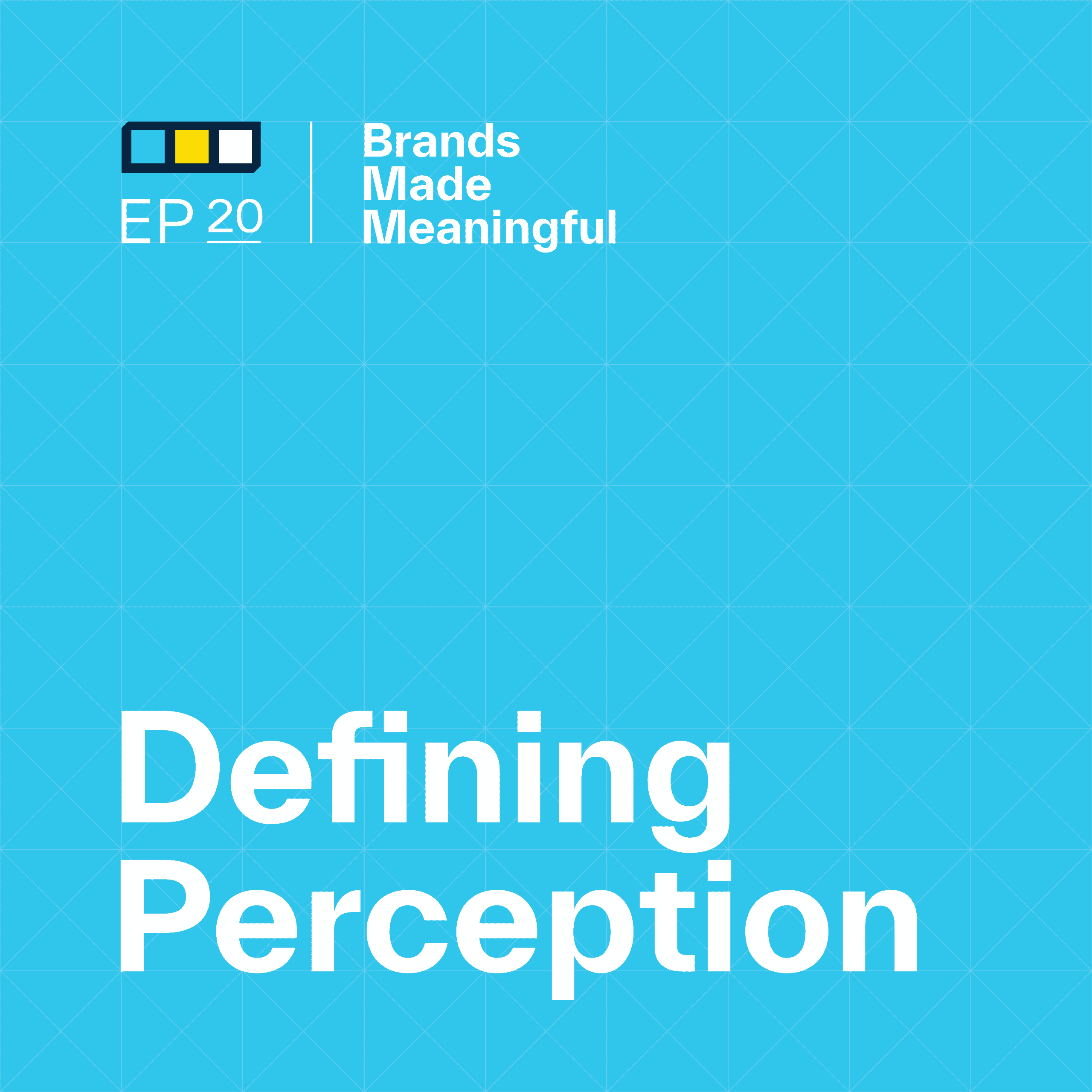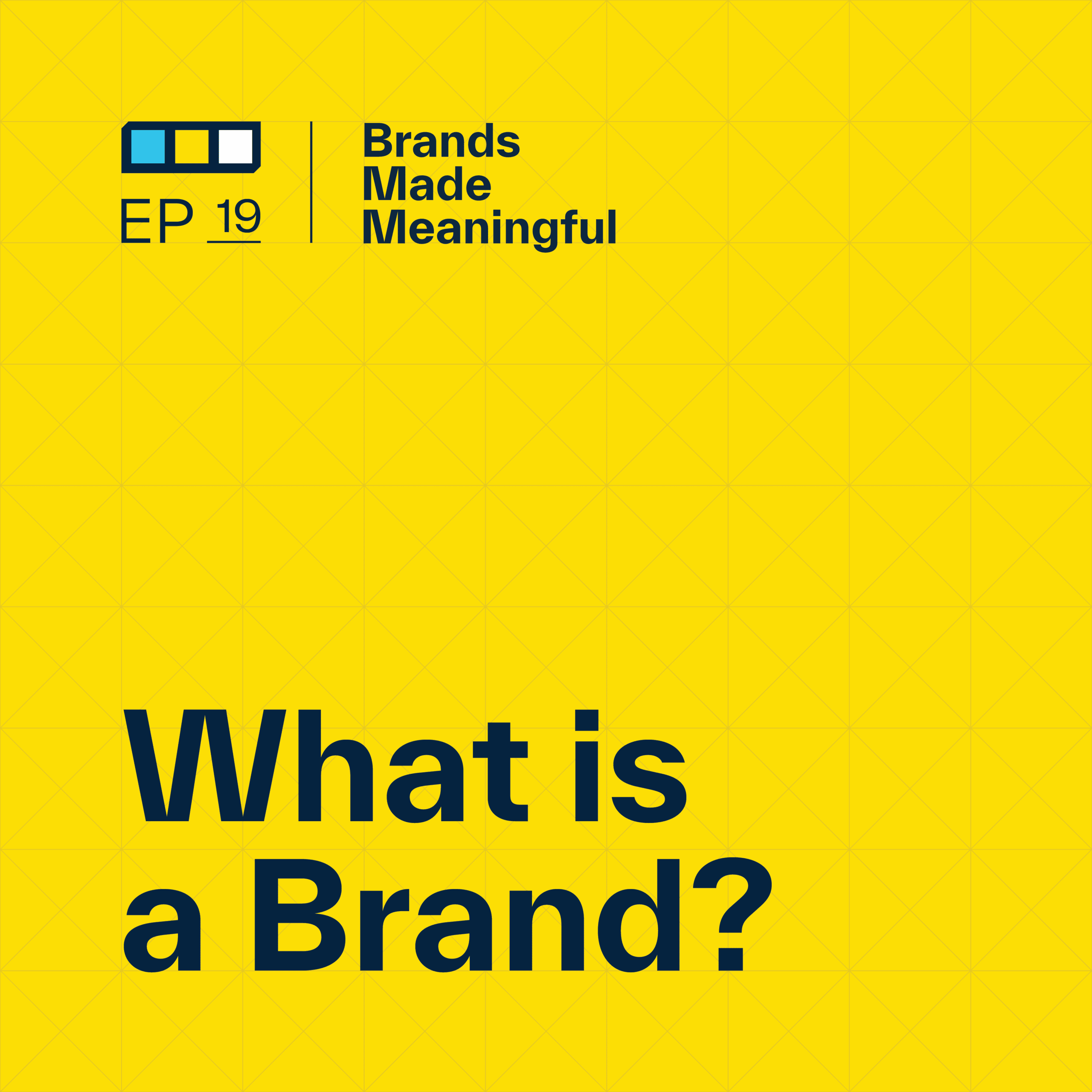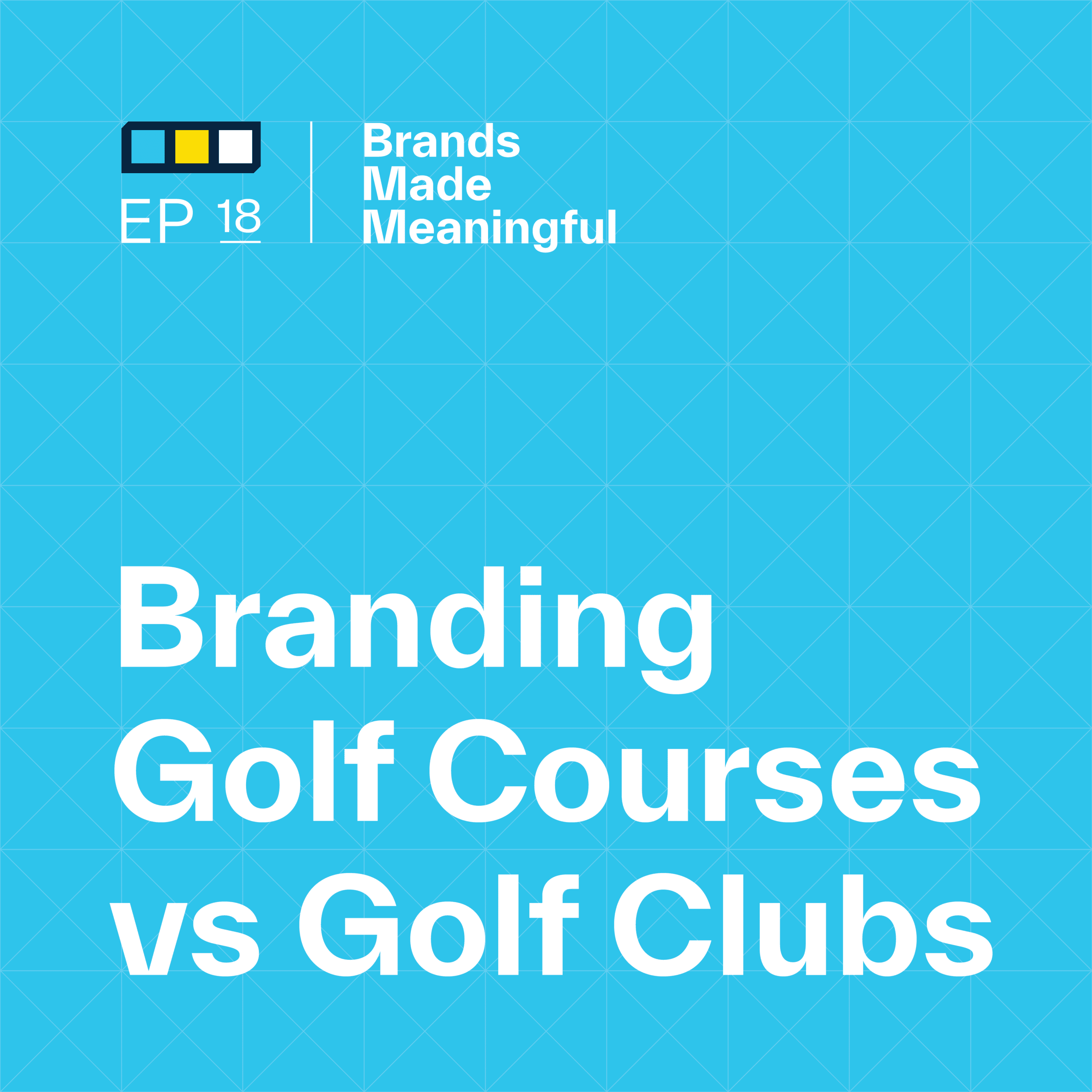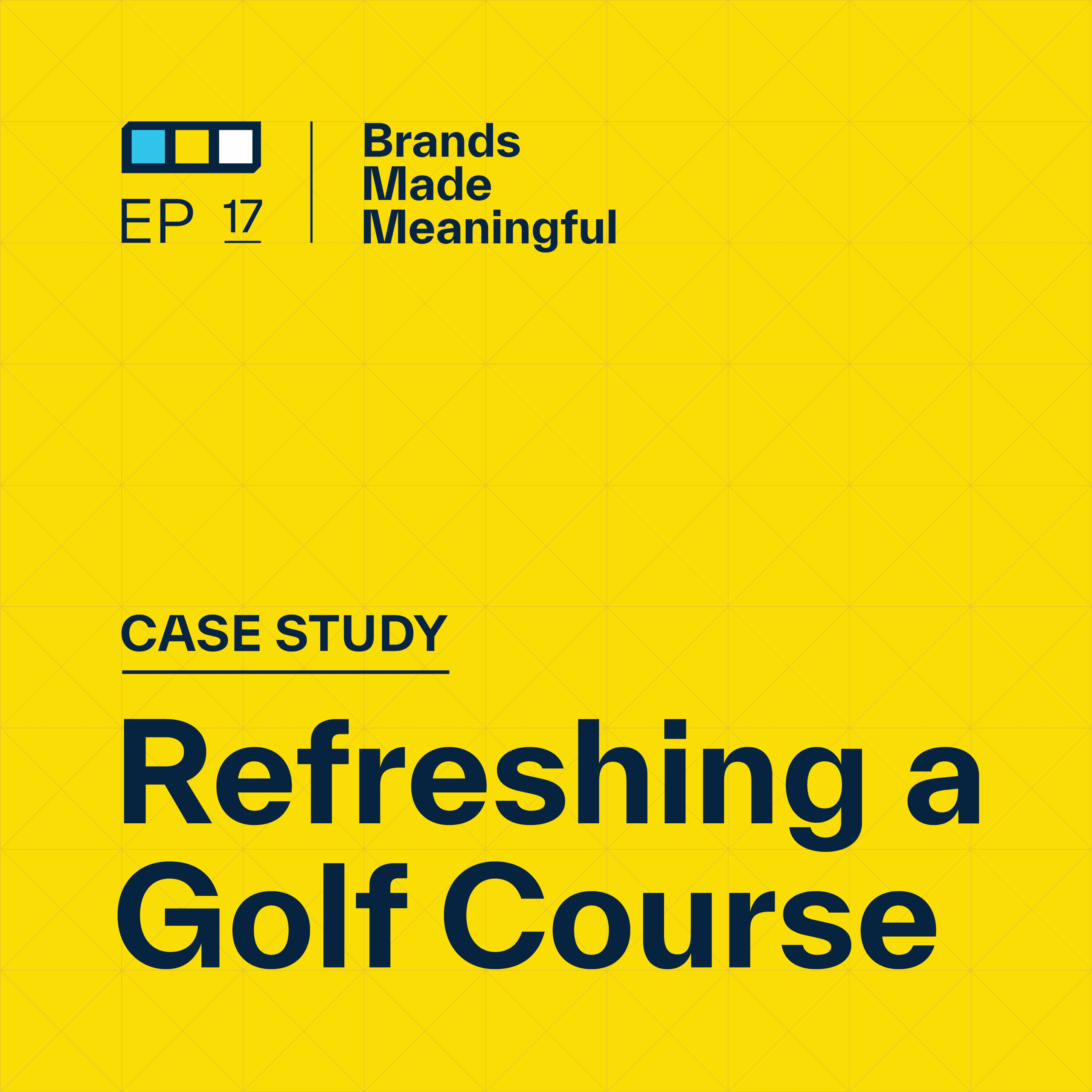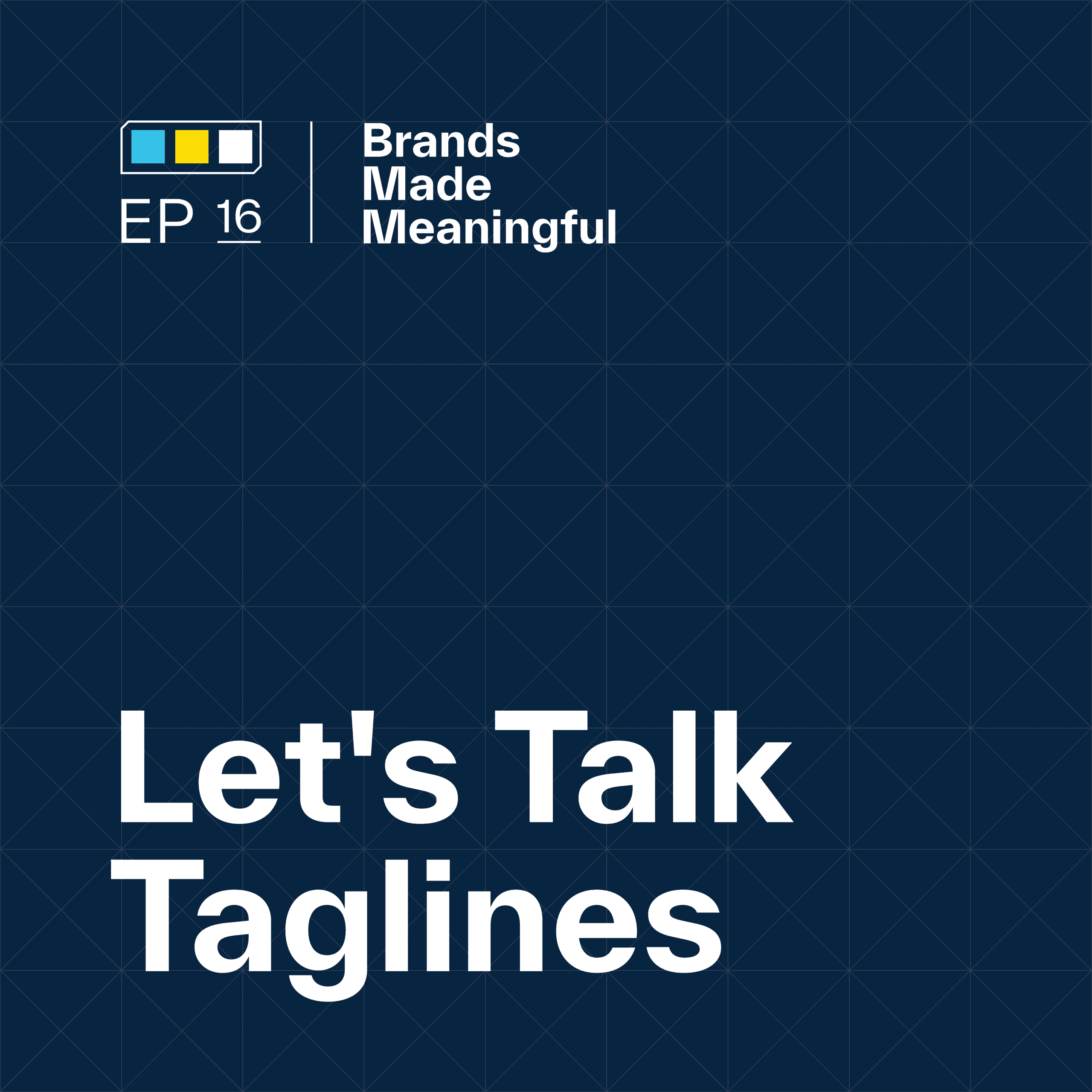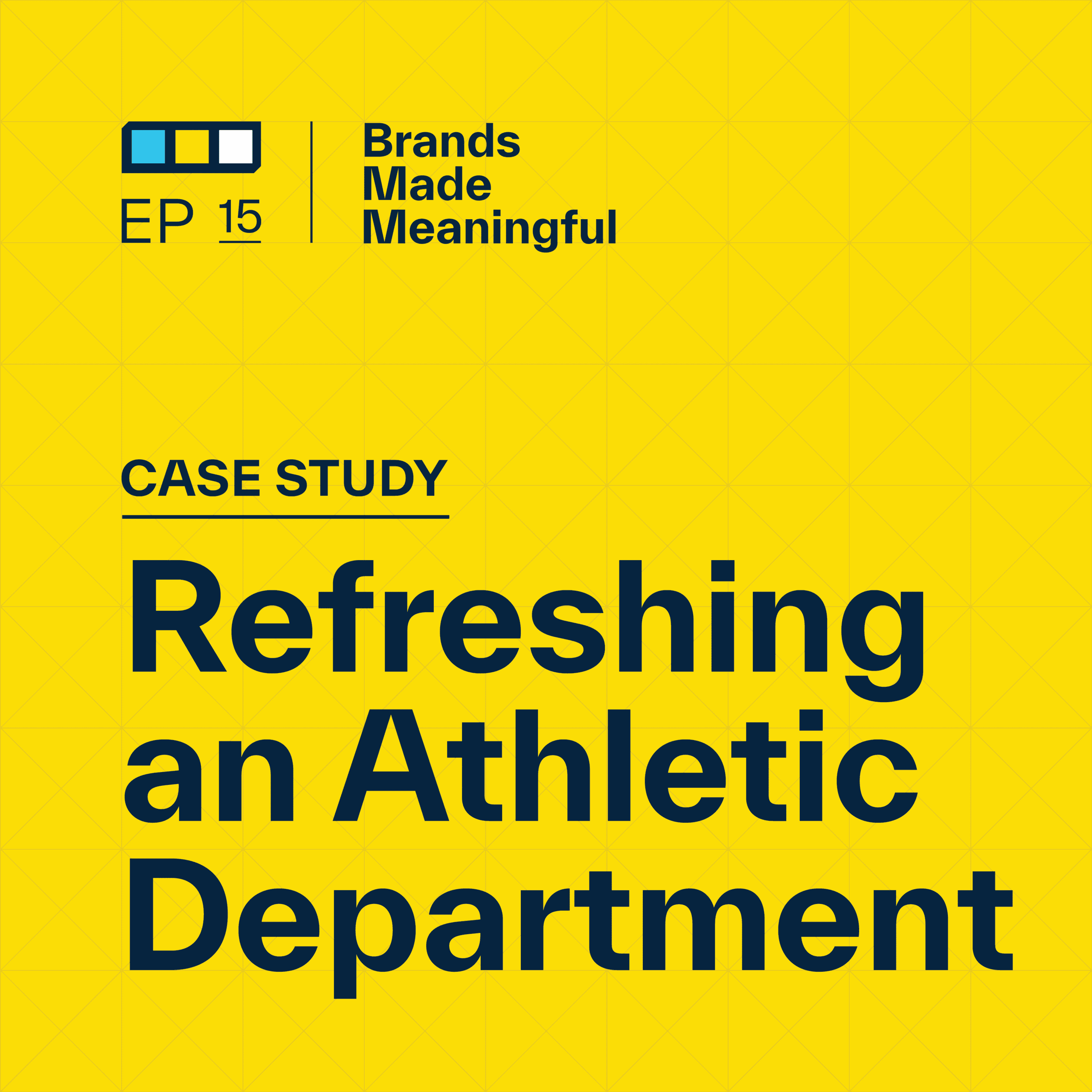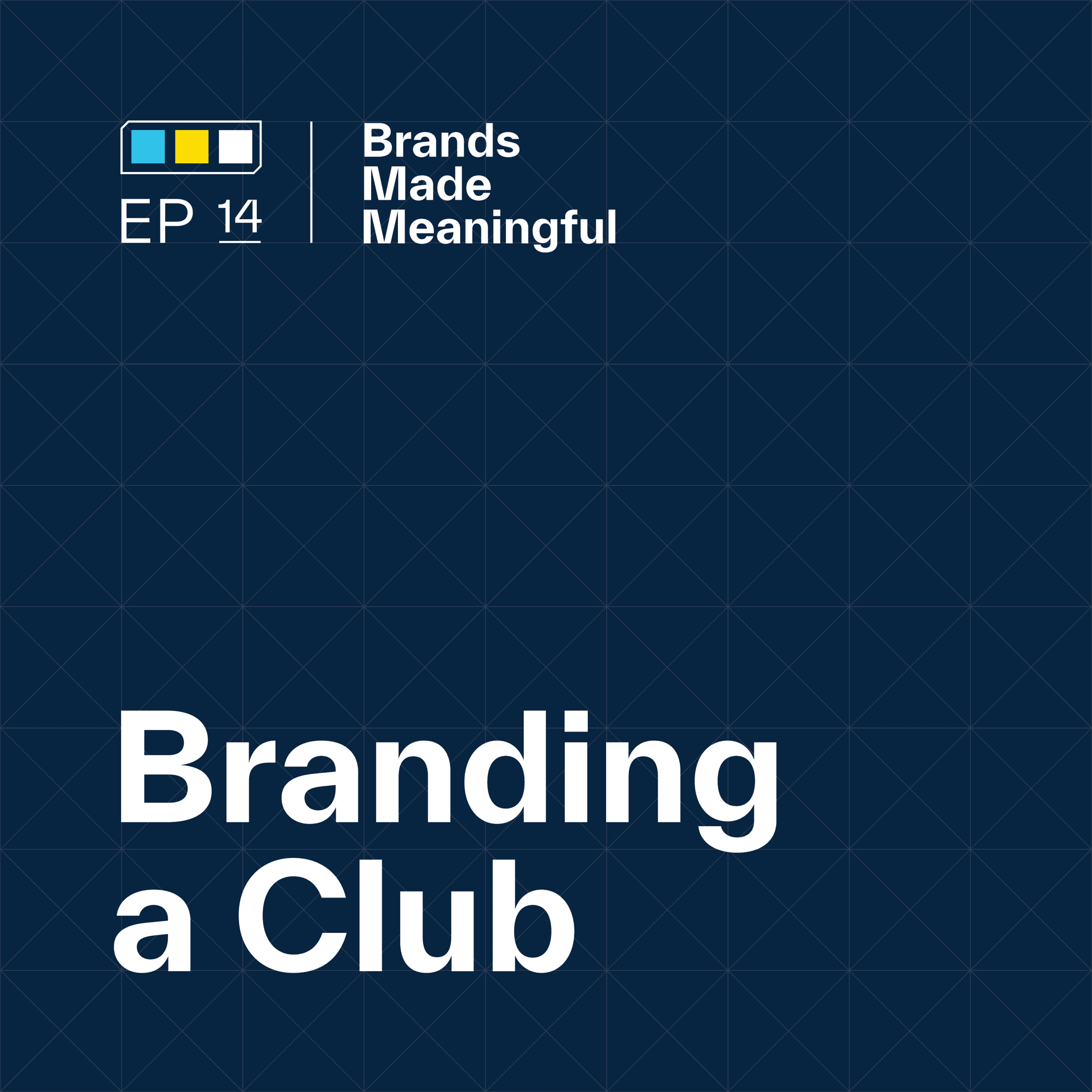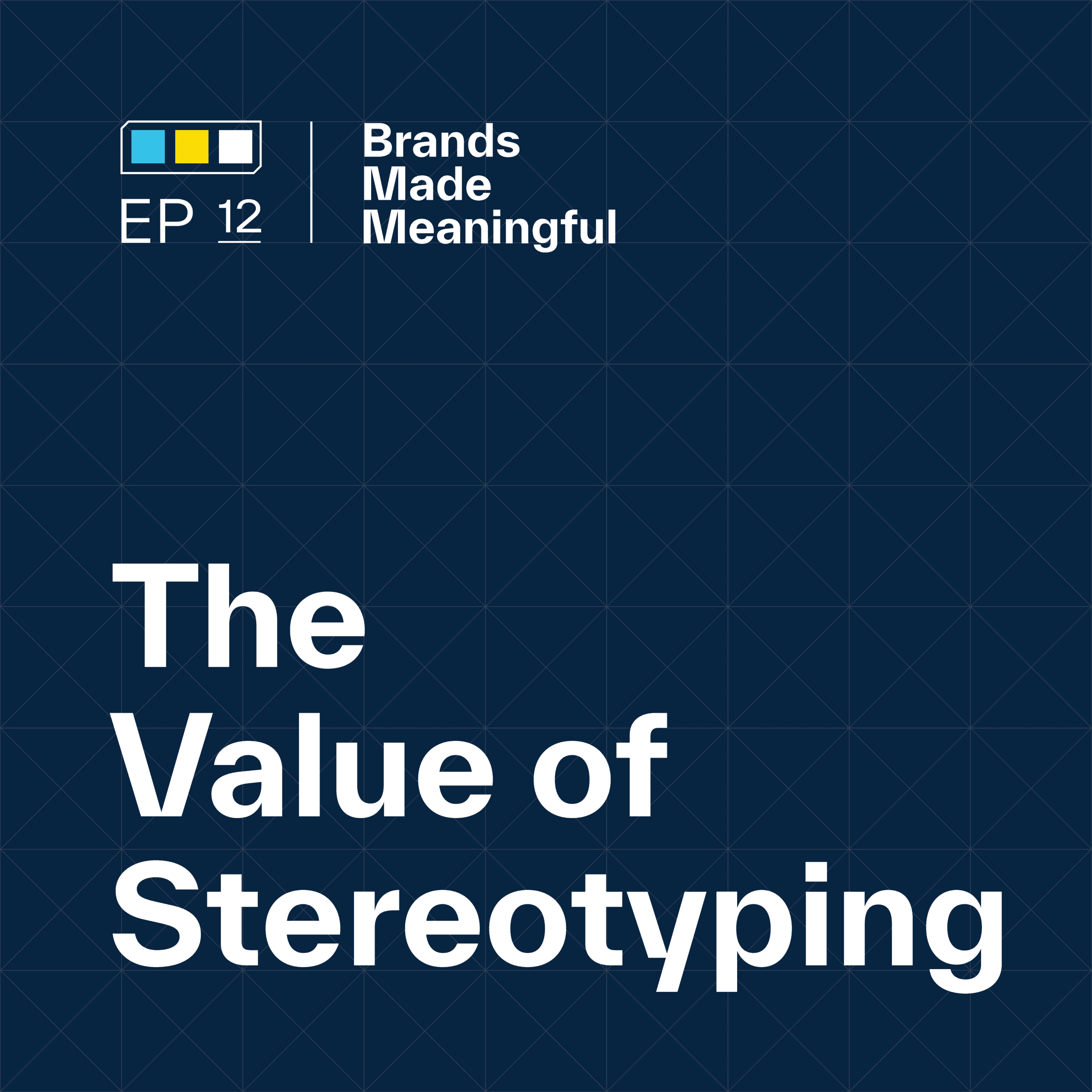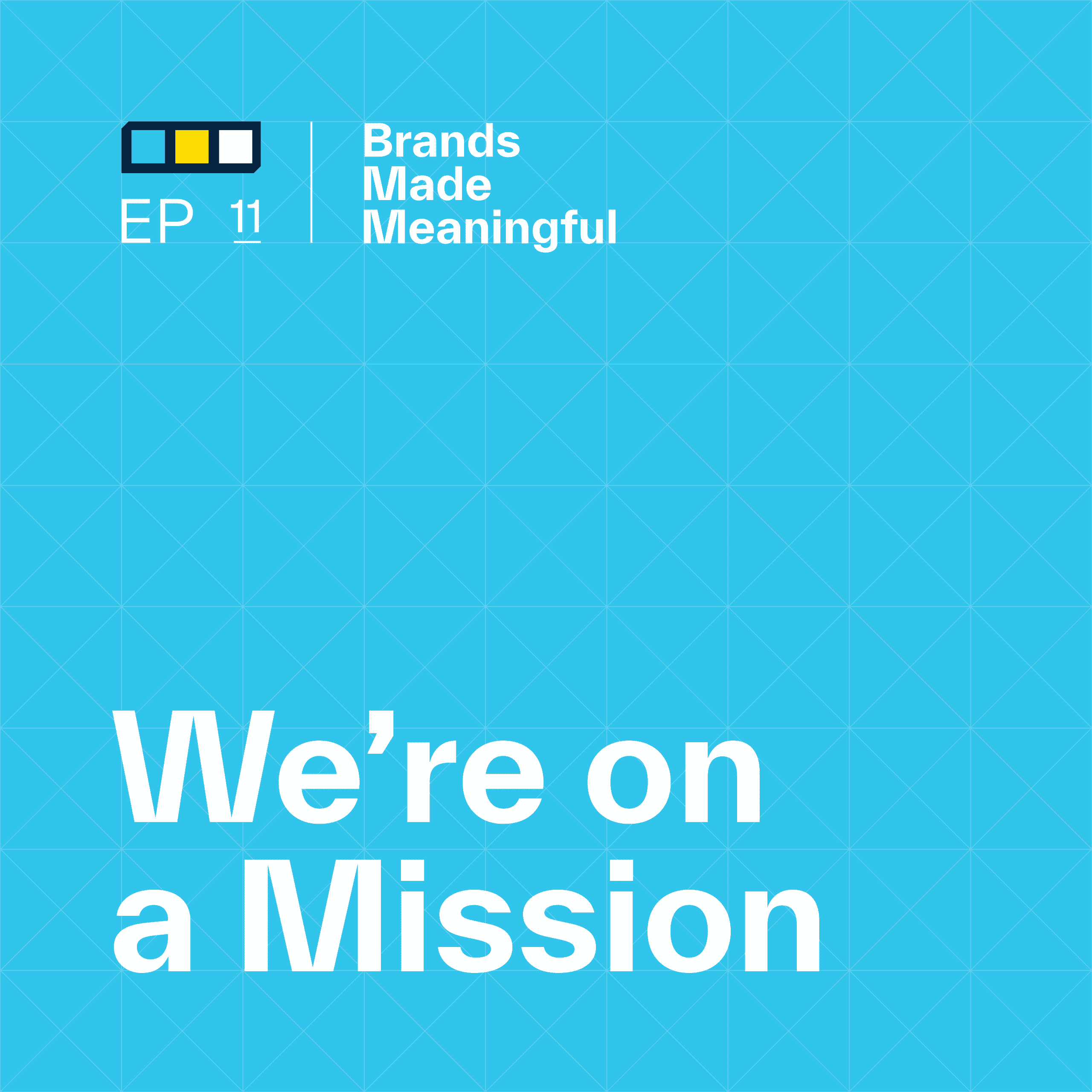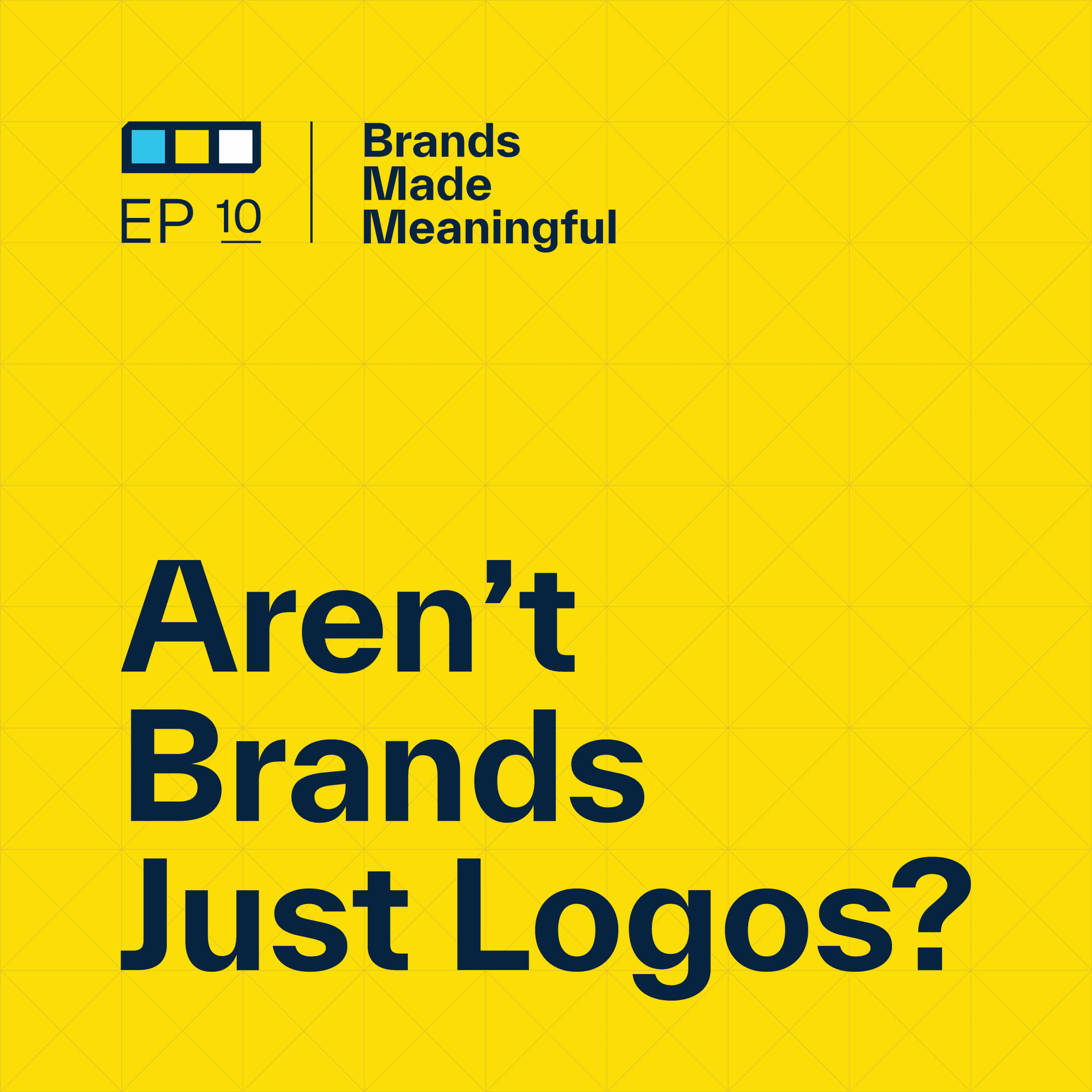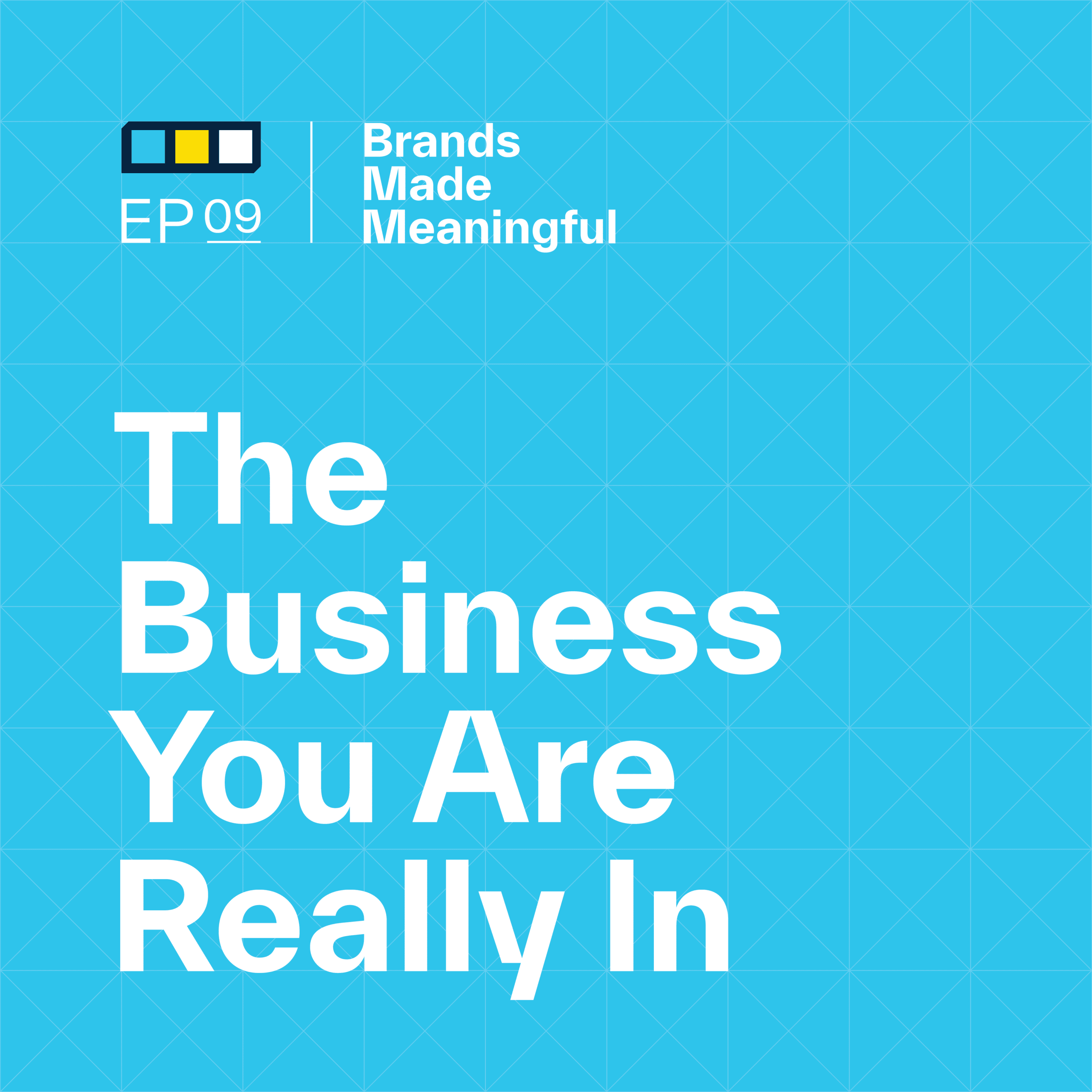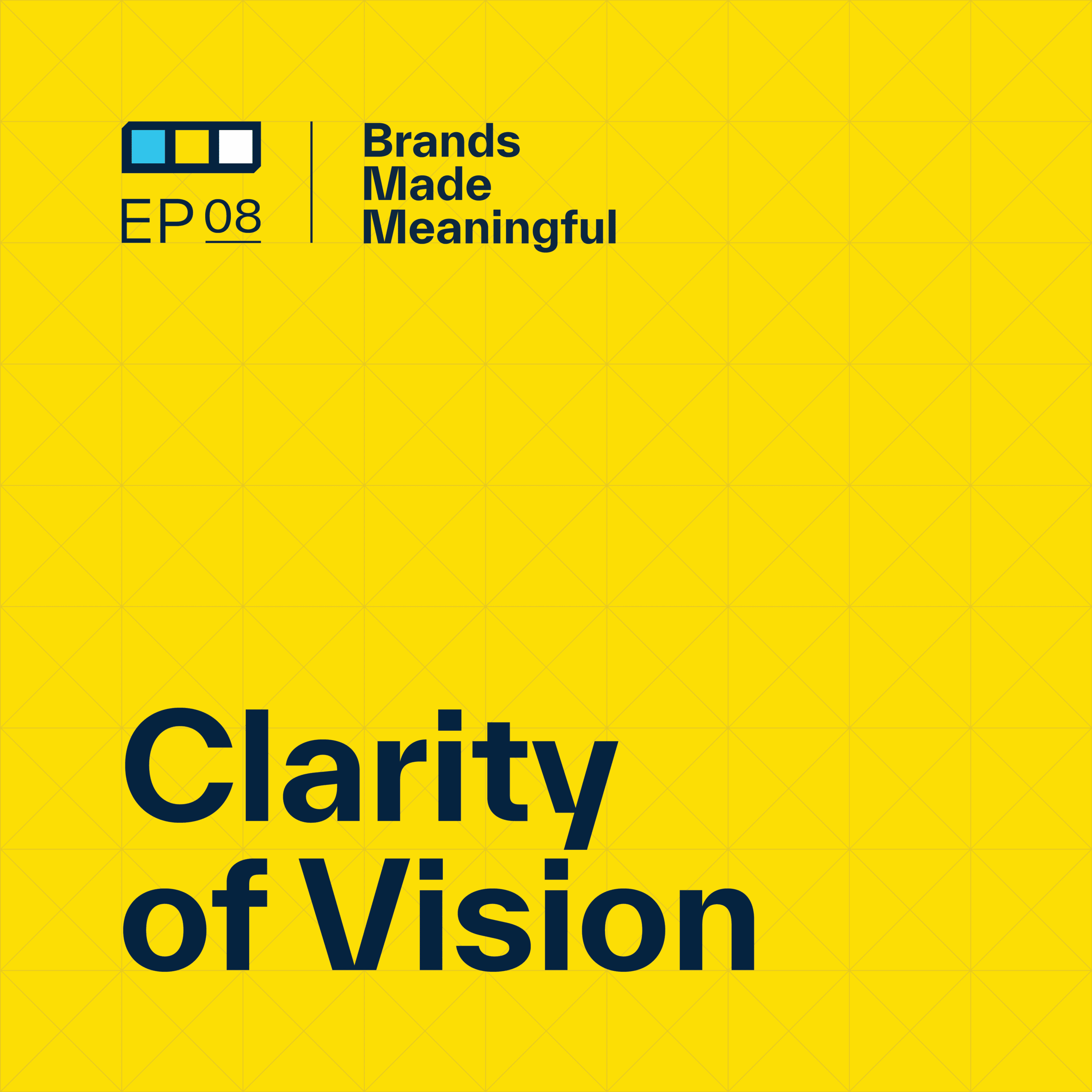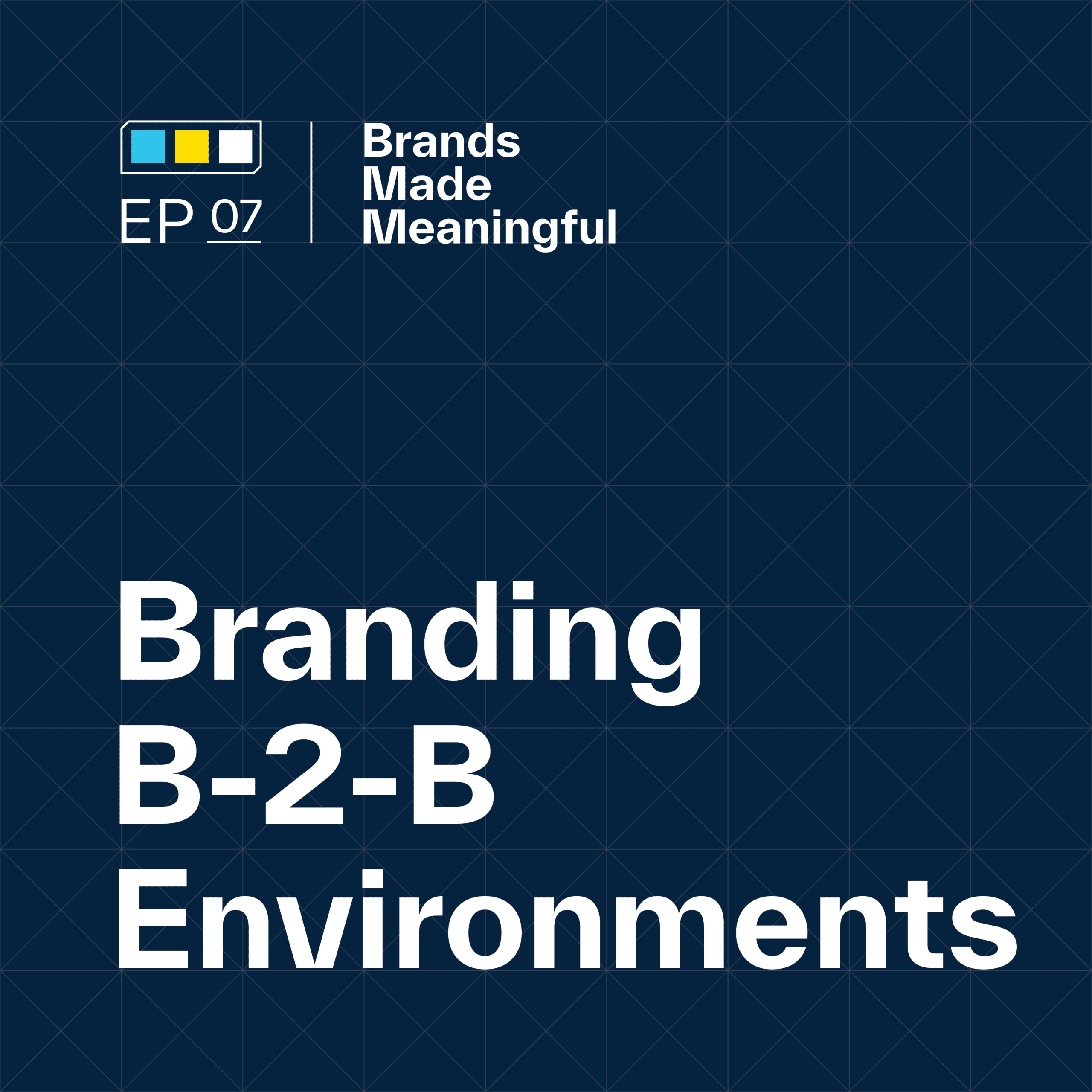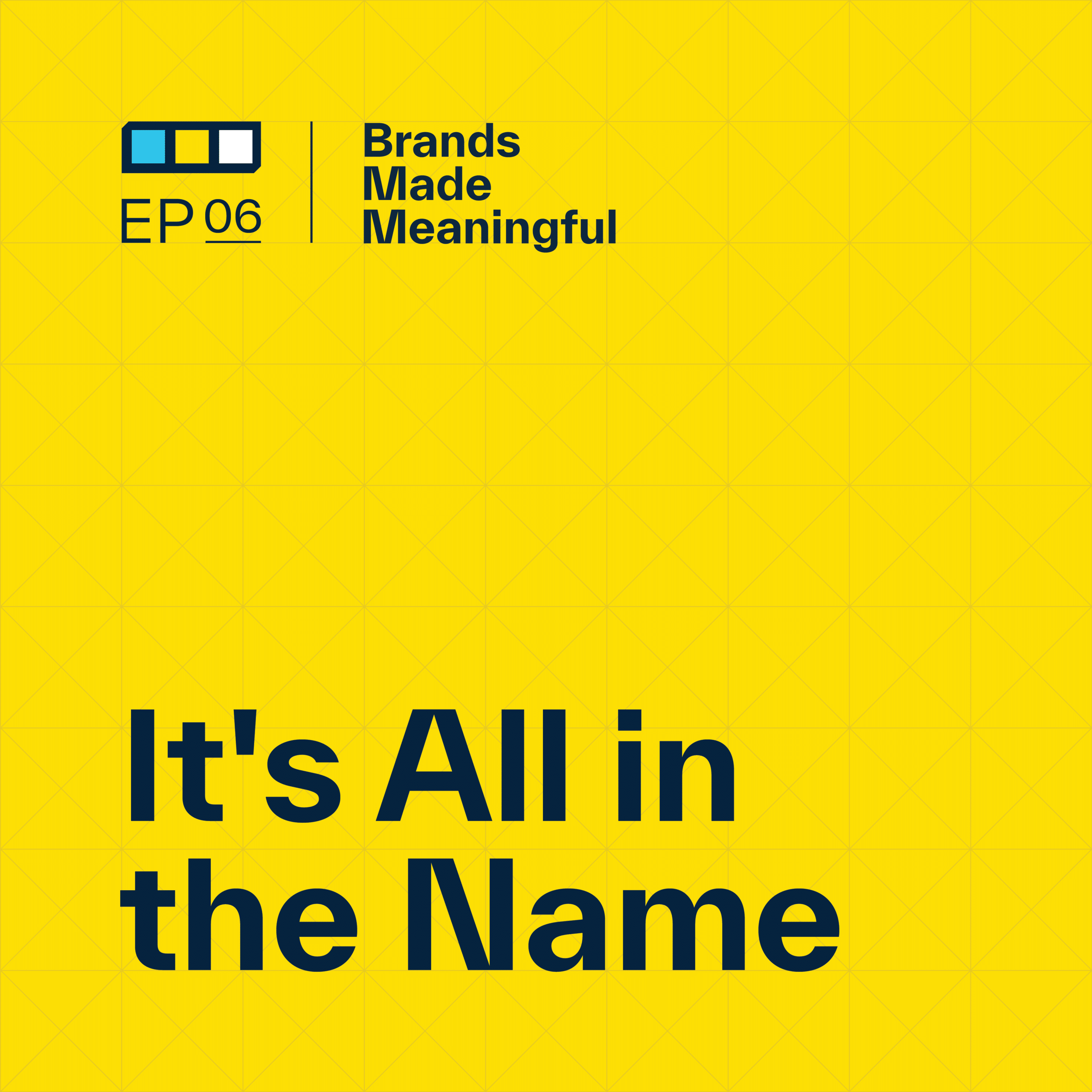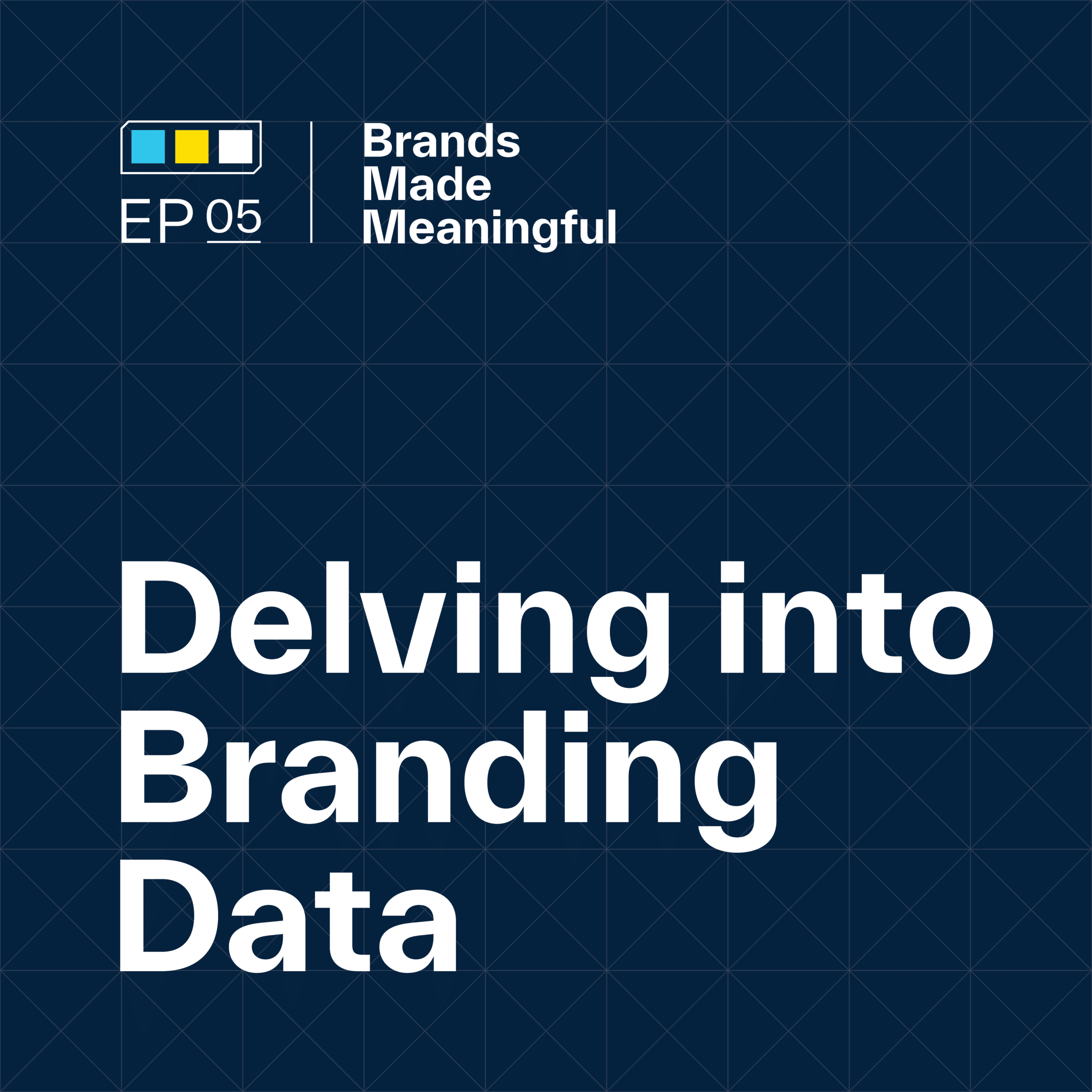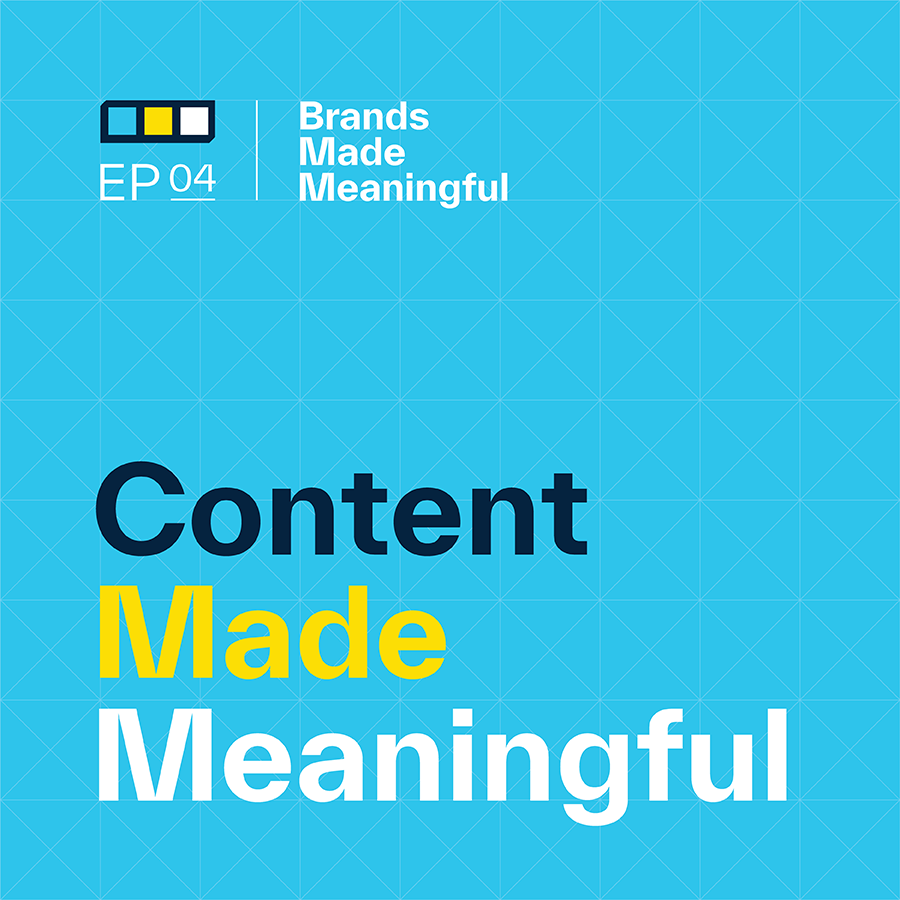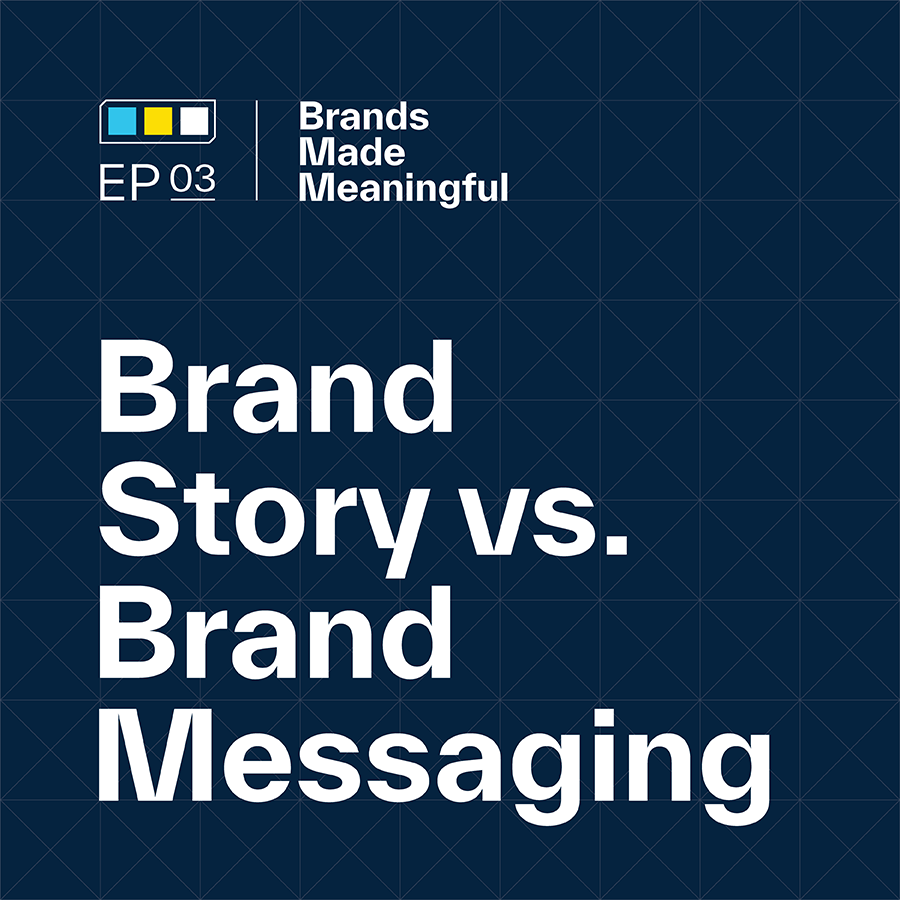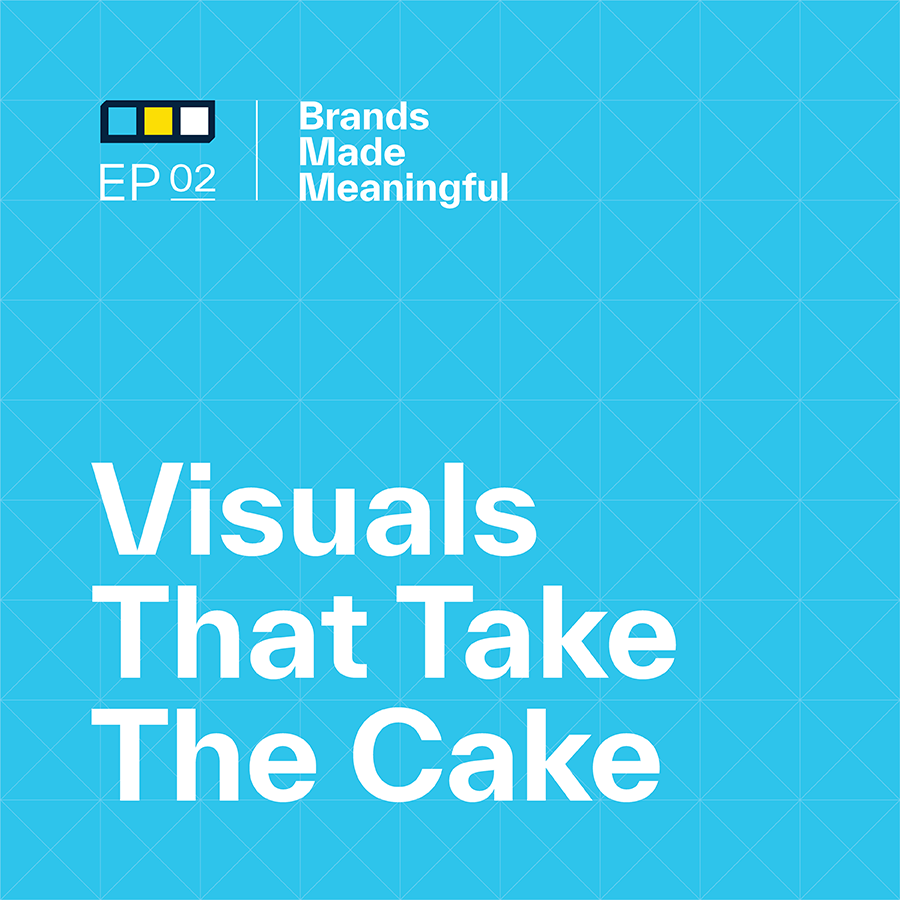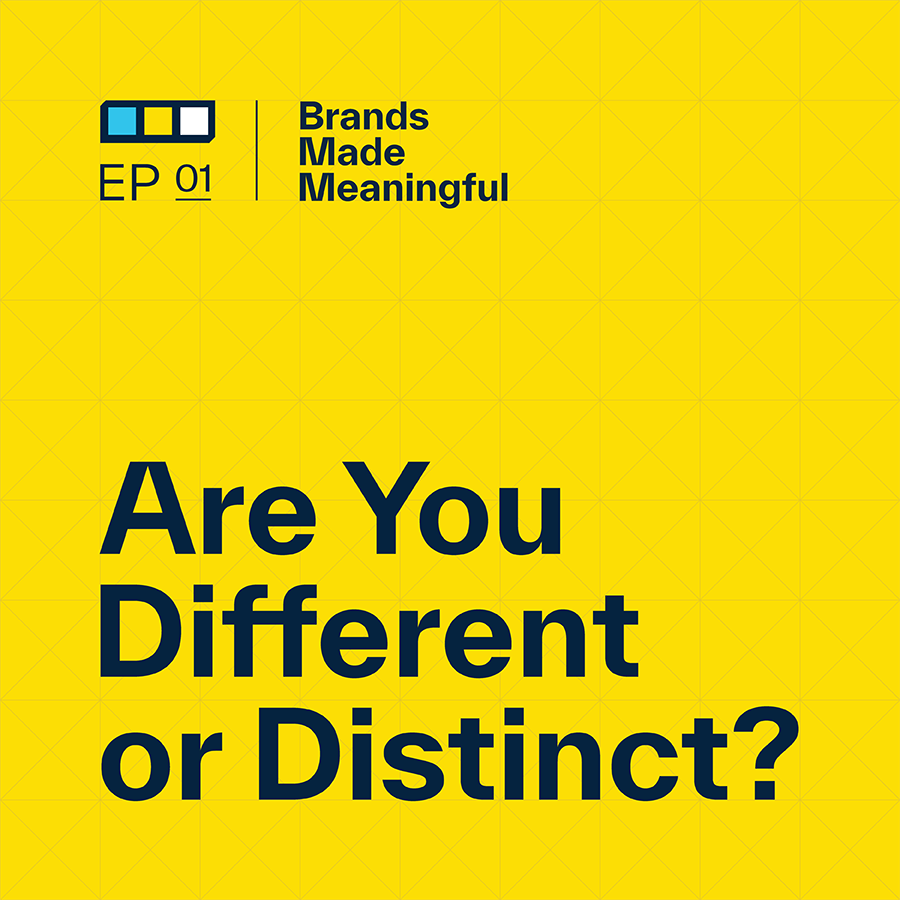EPISODE 24
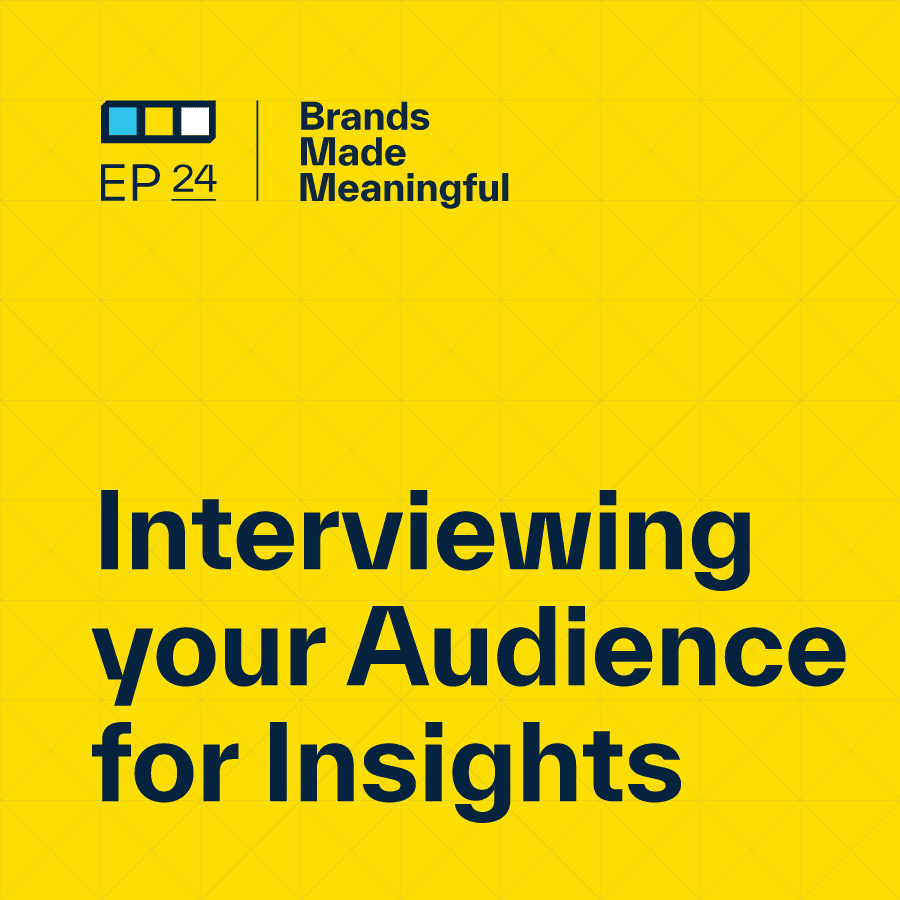
Interviewing your Audience for Insights
Episode 24
This episode details the process and benefits of interviewing your audience as part of the branding process.
EPISODE TRANSCRIPTION
What we are talking about today is a little bit of a deeper dive into why we do one of the specific pieces in the discovery phase of branding.
Derek Favorite might not be the right sentiment. But we found it became an incredibly insightful part of our learnings about a brand and what it should be saying, how it should be communicating, and how it can differentiate. And for us, that comes down to the act of interviewing people.
Expand Full Transcript
Tucker We call them interviews. They’re really just conversations. They’re really not this formal interview where we have to ask these specific questions and get after it. We’ve found over time that the more casual the interviews are, the more insights come out of them, which is great. They’re not just slapped together by any means. We have a set of questions and we’ll go through those questions depending on the audience that we have in those interviews. But I think that everything we do in the first part of any big rebranding project, whether that’s getting an audit done of their current brand or discovering their goals for their company or understanding survey results, we do so many different things that give us insights. But for me, this is the one big task that we do that helps get us emotional insights.
Derek So, at a glance, the brand building, brand refreshing process, is five steps. There’s a discovery component, a strategy component, an alignment step, the creative phase, and then the amplification or the activation. What we’re talking about is a component of that first phase, the discovery phase. A lot of agencies, and a lot of people in the brand space, will ultimately put together what we would call a creative brief for the client, for the marketing director, that summarizes the objectives of the project as we understand them. And many of those creative briefs spit back the answers to typical discovery, kind of kick-off questionnaires. What we’re talking about is next level. Why do we go next level? When we kick off a project, we have a conversation with our target or our key contact within an organization. And we ask them who their customers are, who their competition is. We ask them what they think their customers want. Why don’t we stop with that one conversation?
Tucker Normally we do interviews because of the need to find out some of these answers. When we work with clients that do have all the answers, they’ve already done the research, they’ve already done all this stuff, they have all the insights, they’ve done this by themselves, we can move forward without doing this step. But normally it’s, How do your customers perceive you? And the answer most of the time is, I don’t know. That’s a good question. Any time we have good questions that come up in those briefs that you’re talking about, that’s when we add them to the interview list or to the survey list. We need to find that out. So we’re really getting into whether we’re going to use quantitative or qualitative. Qualitative is our research. That’s how we pull it. I know you can do qualitative and quantitative surveys, but we’re not getting into that today. So why do we do the interviews? It really helps us understand the audience in a more deep way.
Derek To understand the audience, there’s a term that we use. It uncovers blind spots. The thing that I’m most interested in is when we have that upfront kickoff meeting and our client says, Here’s who I think our customer is, and here’s what I think they want. And then we actually talk to some of their customers. They’re inevitably, oftentimes, not seeing the whole picture. And that interview conversation helps us uncover that blind spot that ultimately oftentimes ends up being critical in whatever that branding initiative is.
Tucker Basically another way of saying it is it takes the preference or the bias out of anything. If we can talk to 25 customers and they all say the same thing, then we have a really good understanding of what’s going on.
Derek I’m going to get a little nitty gritty. Today is my turn to ask the questions. I’m interviewing you. What’s an interview look like? When you say interview, I think of, Oh, I got to get my good clothes on. I’m going to sit across the table and you’re going to grill me on my resume. What does that conversation typically look like? Is it a group? Is it one-on-one? Is it digital?
Tucker It’s one-on-one. Ideally, it’s one-on-one in person. We do a lot of digital, virtual Zoom interviews. When we say one-on-one, we actually mean it’s most likely Derek and I interviewing or having a conversation with somebody else. So it’s actually like two-on-one. I guess you can look at it that way. We normally have two people in those interviews on our side because there’s a lot of information that comes out of there. We have different ways of talking. There might be something that stands out to you that you want more insight on, and vice versa, that really helps us get all the information we can and ask more questions if we need to right there on the spot. We generally don’t like bringing people back for second interviews because we respect their time. That’s how it is. So we try to get everything in that one interview. How we do it from an actual project management standpoint – they’re normally 30-minute interviews. Sometimes they go 45 minutes. If they’re with key leadership people, they’re probably an hour. But those 30 to 45-minute interviews with our audience can help us find answers to things that would take us hours to figure out by ourselves. This is really about streamlining the guesswork and putting answers to it instead.
Derek So I’m pretending that I don’t know how this happens. If I’m playing the role of a prospective client of Sussner and we’re looking at a brand initiative to help us do a better job of telling our story and growing our business and you’re recommending that you want to interview some people to help us be more informed, to maybe validate some assumptions that we have to uncover some blind spots, maybe even to unveil some opportunities that might come out of this, what you’re doing is sitting down with the people who I’ve connected you with to have half-hour conversations with them, to gather some insights to help you and your creative team make sure you’re approaching this as strategically as possible.
Tucker When you say blind spots, it’s really the unknowns. What do we not know about this? I think most of the leadership we work with love the idea of us interviewing people. It takes it out of their hands. They don’t have to guess anymore. They don’t have to say, I think they might like this. Or I think that they talk about this stuff. And it really depends on the audience. So we do branding projects that are 75% internal, and 25% external. We do branding projects that are all external.
Derek What do you mean by internal versus external?
Tucker The branding project is employee-facing versus customer-facing. Internal is employee-facing – external would be customer-facing or maybe partnership-facing. And the reason why that matters is because we ask different questions. The employee questions can be much more aligned with the future of the company around things that gives you purpose. What do you like about working here? What do you really love about what’s going on right now? Why does change matter to you? Some of these bigger questions and I can get into a deeper list later. But then with the customers, it’s How do you perceive this brand? What are the offerings that really get you excited? What are the things that they say that really generate excitement for you? And I think that when we can start boiling down the way the brand is used today for either of those audiences, we get their opinion, but their opinion matters a lot about how they interact with it and the goods and the bads and the uglies.
Derek How do we determine who we should talk to for each individual organization that we’re working with? What are some parameters for us that we would make those decisions?
Tucker That list normally comes out of our brief. If we kick off a project and we’re assuming 20 numbers are going to happen, we’re going to have a conversation with the point of contact there to say, Here’s what we’re going for. It really depends on the objective of the project. If I go back to this branding initiative being internal facing, then I know we’re going to have to figure out a way to talk to internal employees about certain things, and then it gets even more narrow than that to say, Well, what is the objective? What are we trying to do? Are we trying to understand the long-term goals of this brand? Are we trying to understand the problems within the brand? That makes a big difference if we’re trying to figure out the problems in the way that the brand interacts with employees. We’ll probably talk to more lower-level employees or mid to low-level employees on that hierarchy because they have these great opinions on, Well, this is how I see it every single day. This is how I, not as a leadership personnel, can really interact. And this is what it means to me versus what should this brand be. We’ll have interviews with mid to low-level employees as well. But then we’ll have a lot of leadership interviews because they’re more forward-thinking, high-level. How is this brand evolving over time in your eyes? What should it be?
Derek I’m thinking about Game One, the sports organization that we work with, and the interviews that we did with them to help us in the brand initiative that we rolled out as compared to Lemon Bay Golf Club, a private golf club in Southwest Florida, that we’re working on rebranding or brand refreshing. And the quantity of interviews that we did for each has actually turned out to be pretty similar. First, let’s talk about, for each of those comparisons, how did we determine who to interview? Because I think this will just help people say, If I have a consumer brand, then here’s maybe a mix of people that would be helpful to talk to versus this golf club as a member-driven brand. Who should we be talking to?
Tucker And this is a difficult conversation to have as a general podcast topic because our interview process is really custom. It’s really what problems we’re trying to find and how we can talk about them. And let’s figure out the right people to talk to. So let’s start with Lemon Bay.
Derek I think you just said what’s important is we’ve honed in at the beginning on what the overall objective is. And you’re putting together a certain number of questions and we can talk about literally how many questions we typically ask in that half-hour conversation. But we’re not going in just asking all kinds of meaningless random questions. We’re really honing in on is what the challenge, the opportunity, or the problem that’s been established upfront. And we’re asking questions in a conversational way to try to draw out this specific person’s insights or point of view on that problem.
Tucker So I’ll take your two examples and I’ll just explain how that process went with both of them.
Derek How many questions did we ask each?
Tucker So we’ll talk about Lemon Bay first. They are a golf club, a private golf club, down in Florida and they’re rebranding. And the goal of this is to make a mark that members love. And if we know our primary audience, our members, we know that we’re going to skew members on here, a higher level of members. I think it was about 80% of our interviews, which was 30 interviews total. 80% of those interviews went to members. The rest, 20%, went to staff.
Derek And why did we talk to staff? They’re not members. They’re not paying. What was the point of view that they brought to the mix?
Tucker Staff is there every day, all the time. They’re actually the brand. The staff is the brand. To figure out how you think as a staff member, in that scenario, is critical for us to say, How are we going to make something that’s authentic? Because we can’t brand something and make it something that it’s not or else it becomes inauthentic. It doesn’t resonate. It doesn’t land with that audience. So super important.
Derek And that’s why one of the reasons I’m asking is because that’s what one of the people on the brand committee asked us is, Why are you recommending that we talk to staff? They don’t pay membership dues, we hire them. Why does their point of view matter? What was incredible is when we reviewed all the insights that came out of all these interviews, I could be mistaken, but I think the gist or the sentiment of the story, I’m not going to say it because it’s not live yet, it’s not published yet, but the four words that we came up with around what that story is were directly from a combination of the two or three staff interviews that we had.
Tucker In this scenario, staff put everything into context. It was, We’re hearing a lot about the members doing this and this and this and this. And the staff who have been there for a decade can really tell you, Well, this is what that means and this is what this means. And so you get a great understanding. We almost never have interviews where we only talk to one audience. I’ve never been in a project yet where we’ve done interviews and they’re only customers. You just don’t get the same level of insight. And so for them, it was, Let’s talk about this. It was a half-hour interview that we did with their membership, and we had a little bit different questions for staff, but they were generally the same. It was about 15 questions that we asked, and that might not seem like a lot, but it is a lot. Normally our interviews are about ten questions and we struggle to get through all of those because the conversations are so organic. And those questions related to, How do you feel about here? How did you become a member? What’s important to you as a member? How do you feel about the current logo? How do you feel about the current tagline? What does that mean to you? And understanding how that all comes into play with their experience at the club.
Derek One of the side benefits of these conversations, the reason that we do it, is for us to gather insights that ultimately help us translate that into story or marketing or branding or language. But one of the side benefits of this is that we’re giving people, beyond just the marketing leader, the opportunity to be heard. And sometimes I think there are some really valuable insights within an organization from people that just don’t get asked what their insights are.
Tucker If you ask enough people questions and you say, Hey, I know people haven’t talked to you before, but we’d really like to talk to you. That’s where you get these authentic, really meaningful conversations. And almost every time when we talk to people, they are not afraid to speak their minds.
Derek And how often, when somebody is being interviewed, will say at the beginning of that conversation, I’m not quite sure why I was recommended for you to talk to. I don’t really know that I have anything unique to say. How often does some insightful nugget come out of that specific conversation?
Tucker Every time.
Derek Every time.
Tucker Every single time someone thinks they shouldn’t be talked to, then they’re the perfect person to talk to. And if I’m going to be totally transparent, there’s a golden nugget in every single one of our conversations. Someone might go, Well, why do you do 30 interviews? You didn’t get it in the first 29? And you and I do this all the time. When you get down to the bottom of the list of interviews, you start going, We keep hearing the same thing. But there’s one insight that comes out and says, Wow, that’s really interesting that they thought about it in that way instead of a different way.
Derek Go back to Game One. How many interviews were done for Game One in the rebranding of what formerly had been known as ASB Sports?
Tucker We also did about 30 interviews for Game One. We did about 25 internal interviews. So that was employees. And then we did five customer ones. The big difference between these two projects, and they’re very different projects, is one is a member brand. We’re just rebranding them. The Game One project is a brand consolidation project. That’s taking eight different companies and consolidating them under one brand, one new name. What was really important in consolidation projects is it’s important to know what your customers want from that consolidation, but it’s way more important to know what your employees need out of that. Because most of the time these nationwide brands aren’t going to lose a lot of equity, but the employees do lose a lot of equity. Because, if you think about it, they are used to their own brand. They’re used to being a different company. They’re used to not having to be with this larger company. You take eight smaller companies and put them all into one, now they’re eight small companies. Well, I don’t work at a small company anymore. I work on a nationwide big brand. And for some people, that’s really cool. For other people, it’s really intimidating. You are expected to now go to conferences across the country and figure out how you can work really well with people who used to be, in their case, their adversaries. So for the consolidation project of ASB Sports into Game One, it was really important that we got a good understanding of how employees felt about their current situation and their worries about moving into this consolidated brand.
Derek The conversation not only unveiled opportunities, not only did it clarify our both questions and assumptions around perception, how they are currently thought of, and how they think they should be thought of, it also almost always unveils or clarifies a component of their culture.
Tucker And that culture for them was critical. It’s to understand how can we take that culture and move it forward instead of just building something new that they don’t know.
Derek So here’s one more example. On the other end of the spectrum, we’re in the process of rebranding an attorney, Shindel Segal Mendoza. We didn’t do 30 interviews for them.
Tucker No, we did about eight interviews for them. Much smaller brand, with much smaller needs. And their problems were really figuring out what their attorneys wanted from their brand.
Derek Because their attorneys are often in a business model. They’re almost like independent contractors.
Tucker In their case. And so for them, it was, What do you need out of the brand? You’re going to use this every day to sell yourself, sell your services. What do you need out of it? What do you expect out of this?
Derek So for them, the interviews almost were external and internal in the same conversation. Because as we were interviewing some of their attorneys, those not only are attorneys that were trying to understand how they needed the brand to support their efforts and their work, those attorneys are also prospective either employees or partners that they were looking to attract and draw in, who could also speak to what other attorneys in the market who are looking for a change might be looking for. So my point is, not only is who we talk to custom, so when people say, Who do you talk to? The answer is, it depends. And how many people do you talk to?
Tucker It depends.
Derek It depends.
Tucker We generally start with 12 interviews. That’s generally how we start it. Unless someone has said, Well, we just don’t have the budget to do that, or X, Y, or Z. We would start with 12 as a suggestion and we go up from there. It almost always goes up because there are more people that are like, Oh, you got to talk to this person. You got to talk to that person. We’ve been floating around this 30 number as a really great number to get a really good sense of things. But that’s not perfect. It just depends on the project. It depends on the problem. If you have a lot of audiences, that’s going to require more interviews. If you’re going to have six different audiences that your brand touches, and I include employees and customers and different types of customers and all they do, if you’re not talking to each one of them and giving them the time of day, you might miss something. So that’s where we get to it becoming a very custom process, which people probably don’t love the answer, but that’s the answer.
Derek You have to walk slow to be able to run fast. The discovery process, which we can talk about at length in another conversation and what else goes into that, is done right, and when it’s done thoroughly, sometimes it feels like that’s the slow part of the project. But when that’s done right, it sets up everything else to be so much more meaningful, to be so much more purposeful, and more efficient. So we talked about approximately how many people we interview, depending on the size of the initiative. We talked about that it’s somewhere around 10 to 15 questions that we often ask with the goal of a 30-minute conversation with each of these people. Once we have the answers to all those questions, talk a little bit about a couple of ways that we use that data.
Tucker So just out of clarity here, when we do interviews, unless the clients ask for it, we don’t generally word-for-word, transcribe the interviews. We don’t do this for a couple of reasons. One, because it puts this pressure on the other people. If they know that we’re taking word-for-word notes, that they have to speak perfectly, that doesn’t bode well for organic conversation to go, Hey, you’re being recorded. Every single word you say and do will be held against you or something like that. That’s not true. We generally take notes and we have answers for them and we do paraphrasing, but we put all of those in our discovery to show our clients exactly what we heard for as exact as notes will be. And then we utilize those to understand what story is important here. We pick those out. The insights really get used in the strategy portion. There are times when we have done interviews and the tagline for the brand has literally come out of the interview without them knowing that they were saying it. It’s literally like you just said that, and I wrote that down, highlighted it eight times, and said, That’s the tagline. It’s clear – it happens all the time. Brand stories come out of there. What we utilize that for is a lot of writing and a lot of inspiration for design. When we get to our aligned phase and we start building this visual direction, some of those pieces like the words that you use to describe how it makes you feel get utilized in pulling out photography, which really makes sense for this brand. So there are a lot of ways that we utilize these things. But the key, key, key way is in the strategy. When we do guiding principles, when we do a brand foundation, we call it, and we talk about purpose, vision, and mission, interviews with employees directly inspire within that workshop, what we come to the table with, Hey, we heard this from employees. That’s all based on interviews. And the most impactful foundations, the most impactful purpose statements that we’ve come up with, have come directly out of great conversations with employees about, Why are you here? Why do you work here? Why do you even work in this industry? And what do you really care about?
Derek In working with Lemon Bay Golf Club, which we’ve mentioned, ahead of the creative phase when they were interviewing us as a prospective partner, they flat out asked us, Do you have a vision of what our new logo could be? And, of course, we’re creative people, so it’s hard not to start spinning those wheels. But without getting into what their current logo was and what was working and what wasn’t, which we’ll dive into in a future case study conversation, we’re not able to answer that question. But by the time we were done with the interviews, we had two or three very clear visual directions that we’d been inspired by, not because somebody actually said what the symbol or what the icon or what the visual should be, but because they said words that then helped us think metaphorically and symbolically about how to represent those statements. Another way that we use those insights that come out of these interviews is in the presentation process or in the process of working with our customers. We don’t go away and do it. When somebody hires us to work on a brand, we don’t go away. We’re going to work on our own for a certain amount of time, come back and say, Well, ah, there you go. There’s a certain amount of collaboration. I mean, we don’t know your business as well as you know it.
Tucker I would say the best example I have for this is, Why don’t you guys just go away? I mean, I hired you. Why don’t you just go away, make a logo and a tagline and write all this messaging. Just come back and give it to me. The way that we are built, the way that we like to work, is as a team. A team with you. We’re not our own team. We are now a part of your team. I make the example all the time to say, once you hire us, we are now a part of your team. And that doesn’t change our mindset to say, just like you would with your own team, Hey, I did all this work. What do you think? That’s how we work. There are check-ins all the time. We view this as a collaborative process and the interviews are just like that to say, Here’s what we heard. We sometimes have check-ins halfway through interviews to say, Hey, we’ve heard these things. We know we’re talking to these people, but we actually think we should probably take a couple of those off and talk to these other people instead because we’re having more questions around this and we don’t have questions about the other thing. The one big part that I will preface when we say, We do interviews, we do all this stuff, is we do digital virtual interviews all the time. But there’s just something about being on site with people – to go and do this. The example that I’m thinking of is Lemon Bay. When we went down there and actually sat on the course and talked to the people and viewed how they carried themselves and how they walked through the facilities and staff or members, it was a big difference to say you can’t get the body language you can on in-person interviews. You just can’t. It’s just something about in-person conversations make such a difference. And if that’s possible within the budget, or if that’s the way that this brand interacts with people physically, then that’s probably the preferred method.
Derek Well, kudos to you and to myself, because we’re really good, in those scenarios, putting people at ease. They walk in maybe with their guard up, they don’t know what’s going on. And once they realize we’re really there 100% on their behalf just to have a conversation, it’s like the equivalent of having a cup of coffee with somebody. To put them at ease really quickly and then get them to start, through the guise of these questions that we’re really looking for real answers to, to get them to engage and tell stories and to find out the ways that conversation needs to go to get that information. The other way that I really, really find helpful in gathering this information, is not just when we share the initial insights back with the client or the marketing team and say, Hey, here are ten things that we heard. There are two things that I love about that and find really valuable. One is there’s always a bit of insight, one or two, that actually have nothing to do with brand or branding in any way whatsoever. But for some reason, in these conversations, people feel comfortable sharing something with us that is valuable for this organization to know, whether it’s something they need to address or an opportunity, they have to go after something. It gives these people an opportunity to be heard.
Tucker Let’s take Lemon Bay, for example. We’ve done the process where we did qualitative and quantitative research with them. Qualitative was our one-on-one interviews, and then quantitative was a survey of the membership. And there’s something about doing both, but not at the exact same time, that makes both of them really special. To say we did 30 interviews but we need to know more about something, but we can’t just keep talking to people. We need somebody to come in and get like a general population answer on this. And that’s where we put it into the survey. So there were plenty of questions where we said, Hey, this doesn’t have to do about your brand. But here’s a problem that we’ve heard about three times out of the 30 interviews. You might want to ask everyone else about that in this survey. And they did and it helps give them insight into what that is and how they move it forward from not having a brand perspective. And I think that resonates with me by saying the interviews are really move-the-needle-forward conversations. How do we talk to the audience and make them feel like what they’re saying is moving the needle forward, that their insights are really needed and really helpful for us? And I think that’s a big difference between saying why we do two-on-one interviews. It’s because you just can’t get that sense of just relaxing. We’re just talking, don’t worry about it because I’m not rushed because I don’t need to make sure I know every single thing you say and you’re not rushed because you’re paying attention to what they’re saying. And so I think it’s just a really special thing. That’s why I like it so much.
Derek Well, it’s it arms the creative team that you work with some really great tools to help you with the changed management that comes with refining your brand or changing anything when it comes to your brand. We just lead a presentation of new logo concepts with the top five insights that came out between the interviews combined with the survey that we did and said, Here are five things that we’ve heard and that we’ve learned. And in every one of the creative executions that we’ve shared, we can point directly to how those creative pieces were either inspired by each of these insights or addressed each of these insights. And when they go back to the larger membership, instead of having gone away for three months or six months and come back and said, Hey, everybody, here’s our brand new logo. Hope you like it. They’re ultimately going to be able to come back and say, Here’s where we were, here’s how we got there, here’s what we heard from you, and here are our solutions to that. And people are going to feel included and part of that process.
Tucker And I remember when we did a project earlier this year, we released the brand. And it was, here’s the launch of the brand to the internal team. Here’s what it is. I won’t get into who it was or why we did it, but the interviews were really critical. When we launched the brand, you asked, Where are these interviews going to be used? There was such an impactful quote in the interviews. I wrote down the quote, and that was a part of the launch of the brand to say, Jim from H.R. said this really, really important thing. And he’s not the top at the top. He is a middle guy in this company. And he is really inspiring with what he said. And that changes the tide for everybody else to say, We’re doing this not because our leadership thinks that we should do this. We’re doing this because you said that we need to change for this reason. And that makes everything change. That’s really about building a team.
Derek So I think my takeaway would be if you are considering a branding initiative, refining your brand, rebuilding your brand because of some need or trigger point or reason, make sure you’re taking the time to talk to some people, to have whoever you partner with, the creative people that you bring in, make sure that you’re allotting the time for them to have a bunch of one-on-one conversations because it’s going to give them the tools and the inspiration to make your project more successful.
Tucker And it might take more time. And that’s just what it is. I think a lot of people try to skip interviews because they say, It’s going take an extra month to have 30 interviews. Those interviews may seem slow now, but when you get there, it would be twice as impactful because you have actual quotes, you have actual insights from people.
Derek We’ll dig into some other parts of the discovery process at another time, but I think that’s good for today.
Tucker I think that’s enough for today.
Derek Perfect. Thanks. Thanks for listening. We’ll catch you next time.
Tucker Yeah, thanks.
Derek Sussner is a branding firm specializing in helping companies make a meaningful mark, guiding marketing leaders who are working to make their brand communicate better, stand out and engage audiences to grow their business. For more on Sussner, visit Sussner.com.
More Episodes Like This
Building Brand GuidelinesEpisode 65
Derek and Tucker show us how to build infrastructure guidelines to unify your brand experience across the board.
Club Identity SystemsEpisode 64
Derek and Tucker cover what Identity Systems entail and how to discern between internal and external methodologies.
Navigating Branding With a BoardEpisode 63
Derek and Tucker bring clarity to uniting your company under one cohesive vision.
Putting a Committee TogetherEpisode 62
Derek and Tucker assemble your need-to-know facts when putting together your committee.
The Guiding Principles of Private ClubsEpisode 61
Derek and Tucker go over the top ways private clubs can find the balance between pleasing old members while attracting new ones, all while making moves towards the future.
How Color Affects PerceptionEpisode 60
Derek and Tucker cover how to best convey your business with color.
Brand EcosystemsEpisode 59
Derek and Tucker break down how to craft effortless experiences when considering your brand as a whole.
6 Types of Brand TransformationEpisode 58
Derek and Tucker dive into 6 distinct types of transformations for a wide range of brands.
Tournament Branding For ClubsEpisode 57
Derek and Tucker discuss designing and delighting your club members with tailored events.
Brand Promoters & DetractorsEpisode 56
Derek and Tucker discuss how high level promoters increase your NPS and how to turn the tides on your detractors.
The Loudest Voices in the RoomEpisode 55
Derek and Tucker talk about gathering feedback while prioritizing every voice.
Determining A Primary AudienceEpisode 54
Derek and Tucker discuss if and when you should be honing in on your audience vs. casting as wide a net as possible.
Branding For ExclusivityEpisode 53
Derek and Tucker discuss the intricate process of naming your brand.
Measuring Brand SuccessEpisode 52
Derek and Tucker discuss how we measure our success in branding and a few key KPIs that help us understand our impact.
Branding For ExclusivityEpisode 51
Derek and Tucker breakdown how brands can create the perception that they are exclusive and only for a certain type of consumer.
What Makes A Brand SurprisingEpisode 50
Derek and Tucker break down the Sussner formula that we believe leads to a surprising brand.
Breathe Life Into Brand TraditionEpisode 49
Derek and Tucker discuss the intricacies and common pitfalls of branding for Private Golf Clubs.
They Key of Visual DifferentiationEpisode 48
Derek and Tucker break down the importance of differentiating your brand on a visual level.
Branding For Private GolfEpisode 47
Derek and Tucker discuss the intricacies and common pitfalls of branding for Private Golf Clubs.
Dealing With An Identity CrisisEpisode 46
Derek and Tucker breakdown how to identify and remedy a brand's identity crisis throughout thoughtful and intentional brand management.
Branding vs MarketingEpisode 45
Derek and Tucker discuss the differences between Branding and Marketing and how to make the two compliment each other.
Build Your Brand's FoundationEpisode 44
A brand's foundation is a critical element in being successful in the long-term.
Building a Constructive Branding ProcessEpisode 43
Derek and Tucker break down the steps required to build the most constructive and meaningful branding process.
What Makes a Brand Relevant?Episode 42
Relevance is a key piece of a brand's identity for creating clarity and connection.
Your Right to WinEpisode 41
Derek and Tucker discuss the “Right to Win” and the odds of your brand's success within your target market.
An Intro to Sub BrandingEpisode 40
Derek and Tucker discuss the nuances of developing sub-branding and strategies.
Conquer Branding FearsEpisode 39
Derek and Tucker dive into how to overcome the fear of change and the nature of constant refinement of your brand.
Balancing Strategy & DesignEpisode 38
Great strategy is a necessary foundation for great design—and great design brings great strategy to life.
Branding PrioritiesEpisode 37
Branding priorities are the actions and initiatives that shape or enhance a brand's identity, perception, and market position.
Invest in Your BrandEpisode 36
Investing in your brand benefits your company as a competitor in the marketplace, builds trust with customers, increases perception of quality, and drives employee engagement.
Why is Positioning Scary?Episode 35
Narrowing the brand's position is really a strategic decision to focus the brand's offerings, messaging and target audience on a specific niche or segment within the market.
What Are Brand Consultants?Episode 34
Derek and Tucker discuss the importance of hiring expertise with a wider breadth of knowledge than just visuals.
Hire for Brand FitEpisode 33
Hiring people that fit your brand is key in order to maintain brand authenticity, positive culture, and consistent messaging.
Your Brand’s Stance MattersEpisode 32
Your stance can help define your brand from a core level and make branding, hiring, and marketing not only easier, but more meaningful.
Levels of Executing a Brand RefreshEpisode 31
If you have a brand strategy in place, how do you execute it?
The Role of Features & BenefitsEpisode 30
Derek and Tucker discuss the importance of features and benefits within the context of branding, selling, and marketing your products and services.
Should You Listen To or Lead Your Customers?Episode 29
Within the challenge of any rebrand is the challenge of managing customers' perception of change.
Managing a Brand TransformationEpisode 28
Episode 28 discusses the highlights and challenges of rolling out a new brand, both internally and externally.
Living Your BrandEpisode 27
Your brand is not this shiny trophy on the shelf. It is something that you are molding every single day.
What Makes a Brand Authentic?Episode 26
Season 2 starts off with a discussion about building authentic brand experiences, both internally and externally.
Reviewing your Competition's CreativeEpisode 25
Derek and Tucker discuss the process of reviewing your competitors' creative strategy to better position your brand within the market.
Interviewing your Audience for InsightsEpisode 24
This episode details the process and benefits of interviewing your audience as part of the branding process.
Assumption ReversalEpisode 23
Derek and Tucker discuss how we change our thoughts and get into a different mindset to refine and revise our branding.
Developing vs. Amplifying a BrandEpisode 22
Another way to say it is, development is building and crafting your brand story, and amplification is then telling it.
Refreshing a Sporting Goods BrandEpisode 21
This episode shares the steps behind Sussner’s work in refining the Shock Doctor brand.
Defining PerceptionEpisode 20
Derek and Tucker discuss the positive and negative impacts of brand perception.
What is a Brand?Episode 19
Derek and Tucker discuss what defines a brand and what makes them successful.
Branding Golf Courses vs Golf ClubsEpisode 18
Derek and Tucker further hone in on golf course design.
Refreshing a Golf CourseEpisode 17
Derek and Tucker discuss the bar for golf course design – and how to push past it.
Let’s Talk Taglines Episode 16
Derek and Tucker talk taglines in today's episode.
Refreshing an Athletic DepartmentEpisode 15
Derek and Tucker sit down today to discuss what logos mean within branding.
Branding a Club Episode 14
Derek and Tucker discuss how to brainstorm branding a club.
An Intro to Internal Branding Episode 13
Derek and Tucker discuss the power behind internal branding.
The Value of Stereotyping Episode 12
Derek and Tucker sit down today to discuss the meaning of stereotyping within the branding world.
We’re on a Mission Episode 11
This episode digs into the rallying cry for the greatness your team is going to accomplish.
Aren’t Brands Just Logos? Episode 10
Derek and Tucker sit down today to discuss what logos mean within branding.
The Business You Are Really In Episode 09
Derek and Tucker sit down today to discuss how to discover what business you are really in to better understand your mission statement.
Clarity of Vision Episode 08
Derek and Tucker discuss the importance of looking ahead towards the big picture to better hone the purpose behind what we do in the now.
Branding B-2-B Environments Episode 07
Derek and Tucker discuss the Branding of Spaces.
It’s All in the Name Episode 06
Derek and Tucker discuss what a name can say - and not - about your company.
Delving Into Branding Data Episode 05
Derek and Tucker jump into the discovery phase of branding before it hits the drawing board.
Content Made Meaningful Episode 04
Today Derek and Tucker discuss the concepts within content and its common misconceptions such as the phrase "Content is King."
Brand Story vs. Brand Messaging Episode 03
Your story matters.
Visuals That Take The Cake Episode 02
Derek and Tucker sit down to discuss visual impact and what that could mean for your brand.
Are You Different or Distinct? Episode 01
It's not about being the only option, it's about being the right option. Join Derek and Tucker as they discuss Differentiation & Distinction.


